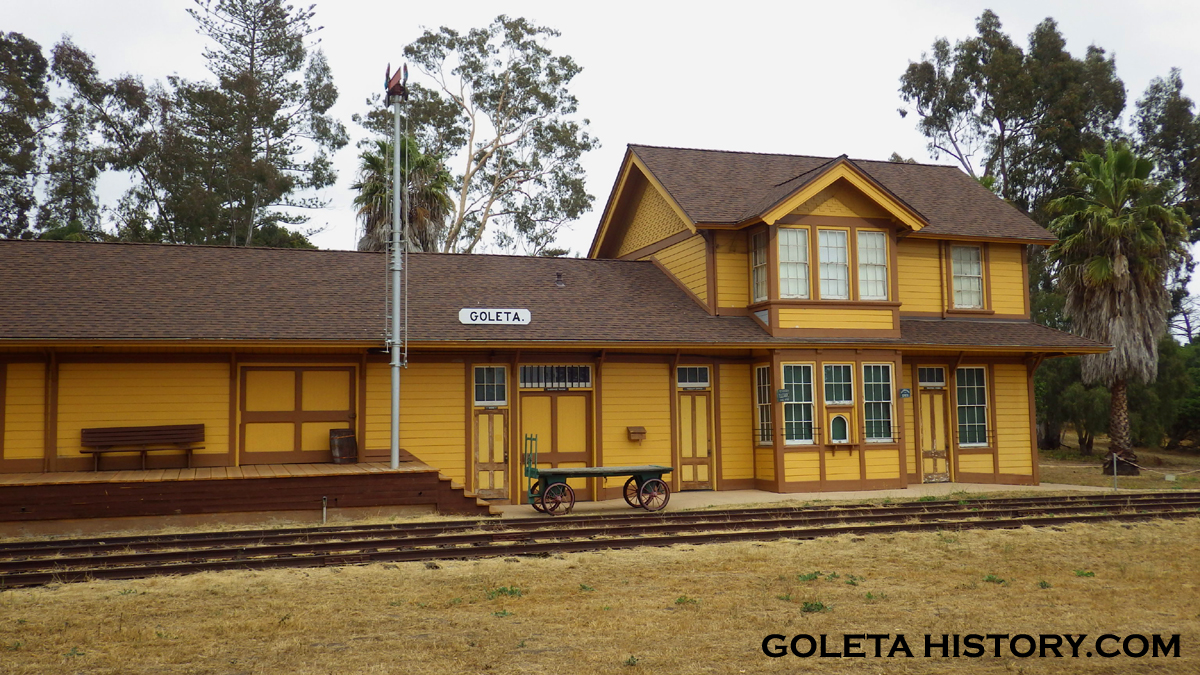
The iconic Goleta Train Depot reminds us of a simpler time, when Goleta was just a small farm town. It is beautifully restored and preserved and it sits next to the Stow House on Los Carneros Road.
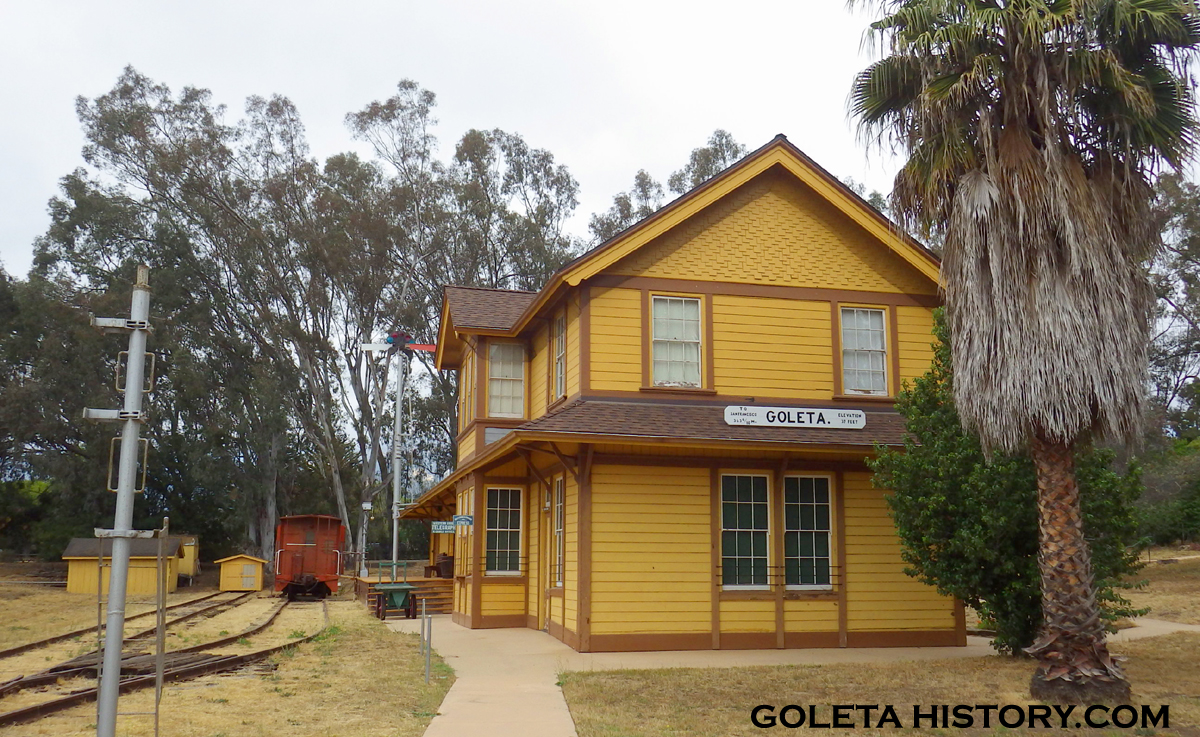
Someone recently asked if the railroad used to run along Los Carneros Road. No, it did not. While the railroad did change routes through Goleta once, it never ran along Los Carneros Road. So why is the depot on Los Carneros? Well, the story is remarkable.
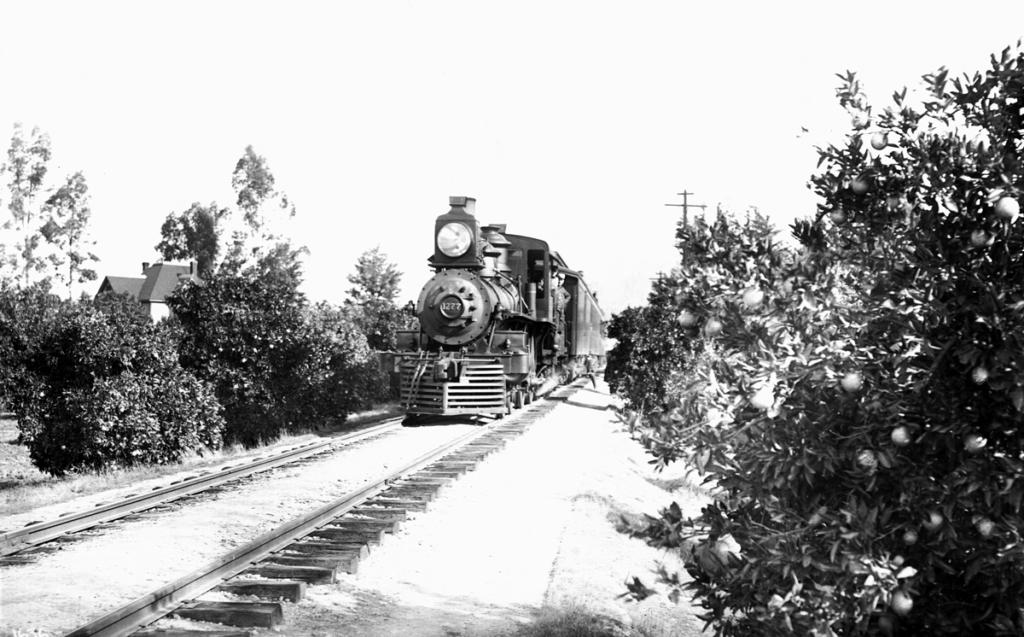
The railroad first reached Goleta in 1887. The plan was for the tracks to run along the coast throughout California, but a downturn in the economy stopped the Southern Pacific Railroad at Ellwood for 13 years. Read more about that on our Ellwood Special page.
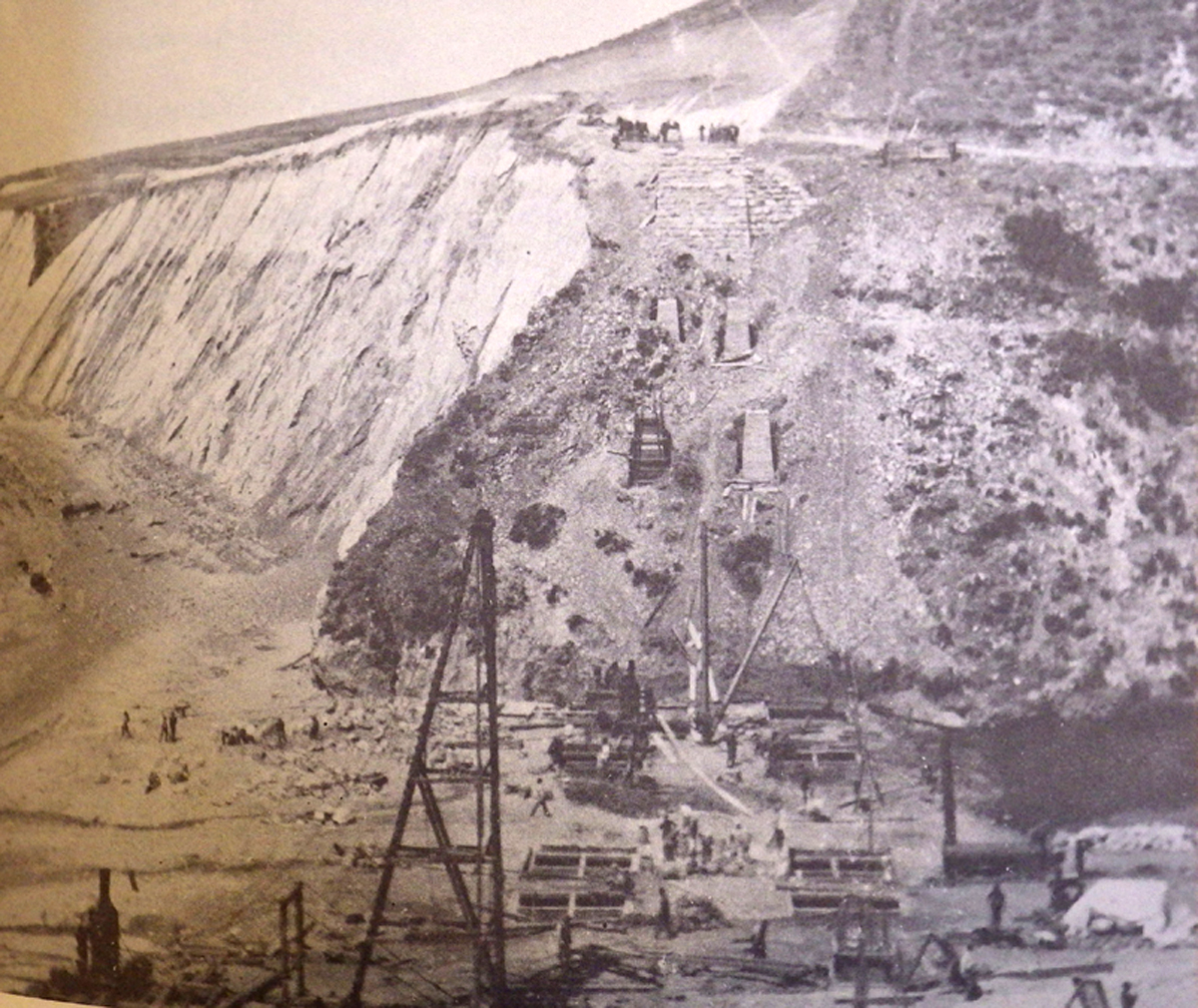
For 13 years, the tracks from the north ended on the coast near Lompoc at Surf and the tracks from the south ended at a roundabout at Ellwood. In 1898, the Southern Pacific Railroad, the “Espee”, started building a new straighter line along the coast to close the 50 mile gap between Surf and Ellwood.
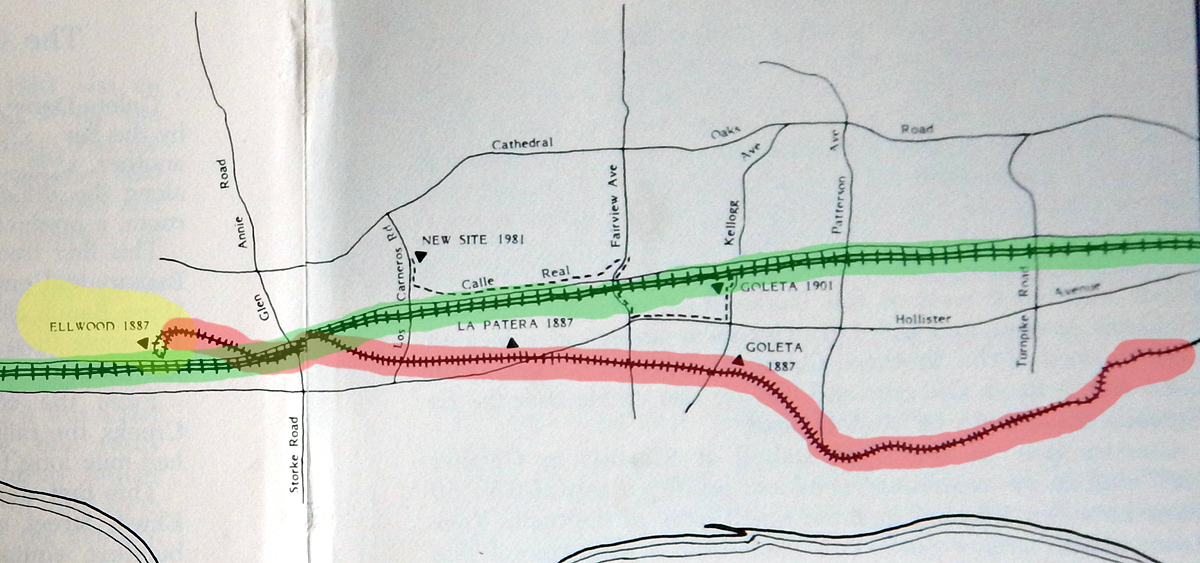
They also rerouted the tracks through Goleta, the old route shown in red and the new one in green.
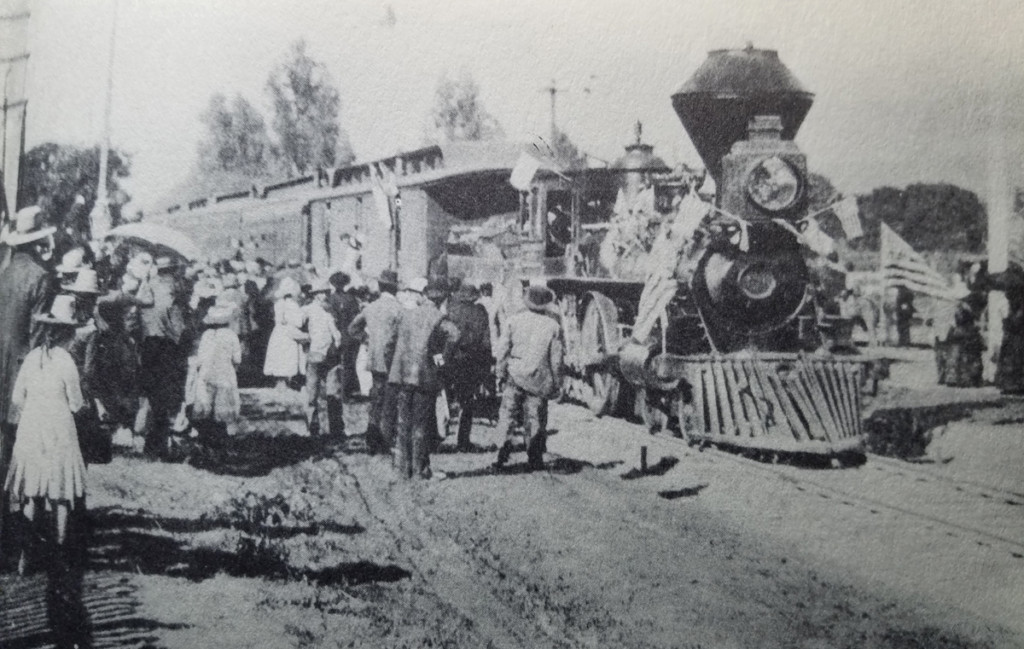
The Espee finally finished the Coast Route through California in the last week of 1900. With this accomplishment came the need for train depots along the route.
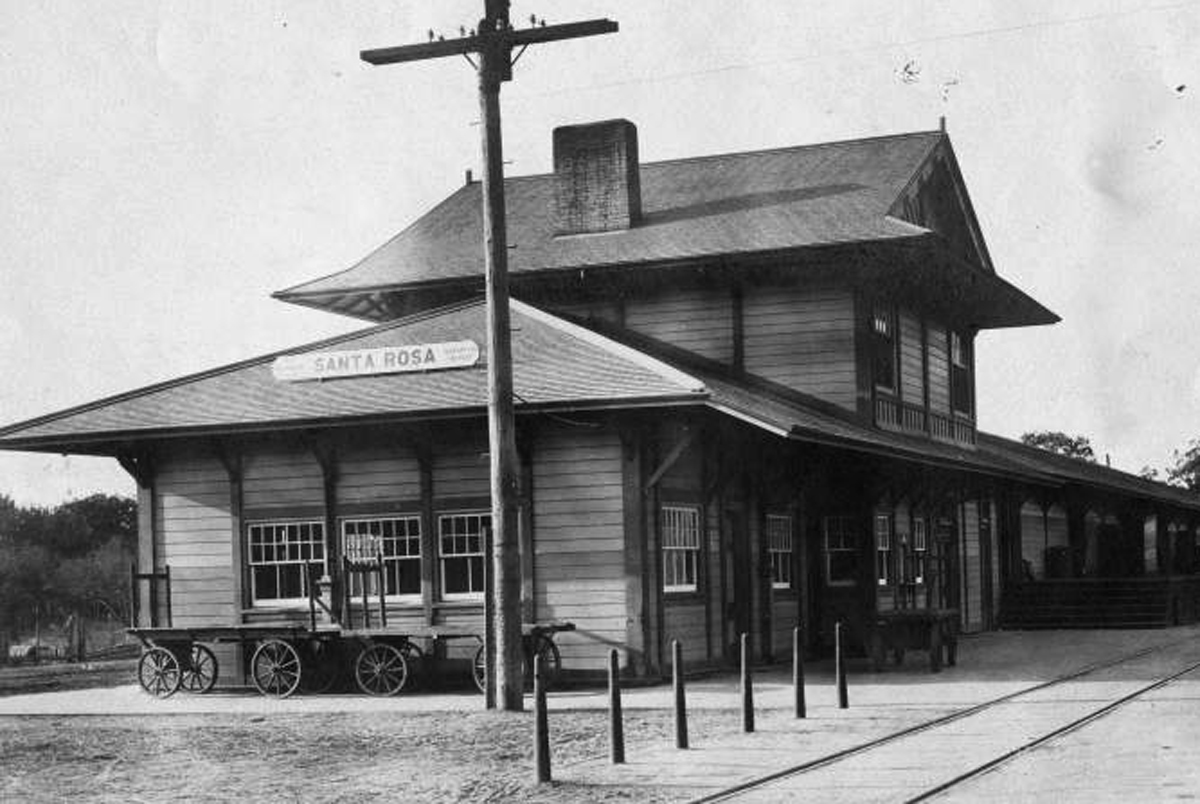
The new depots were built using a design called “Combination Station 22”. Minor modifications were often made, but for the most part, they all looked quite similar.
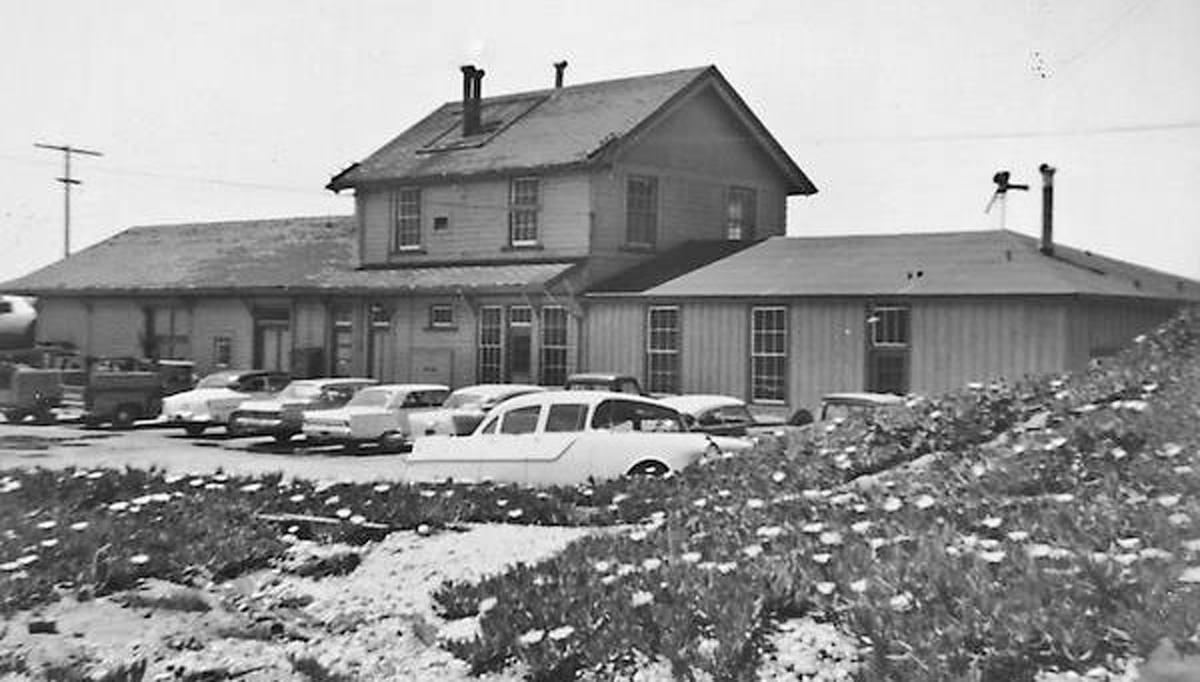
And they all were painted “Espee yellow” with brown trim.

Locally, depots were built at Carpinteria, Goleta, Ellwood….
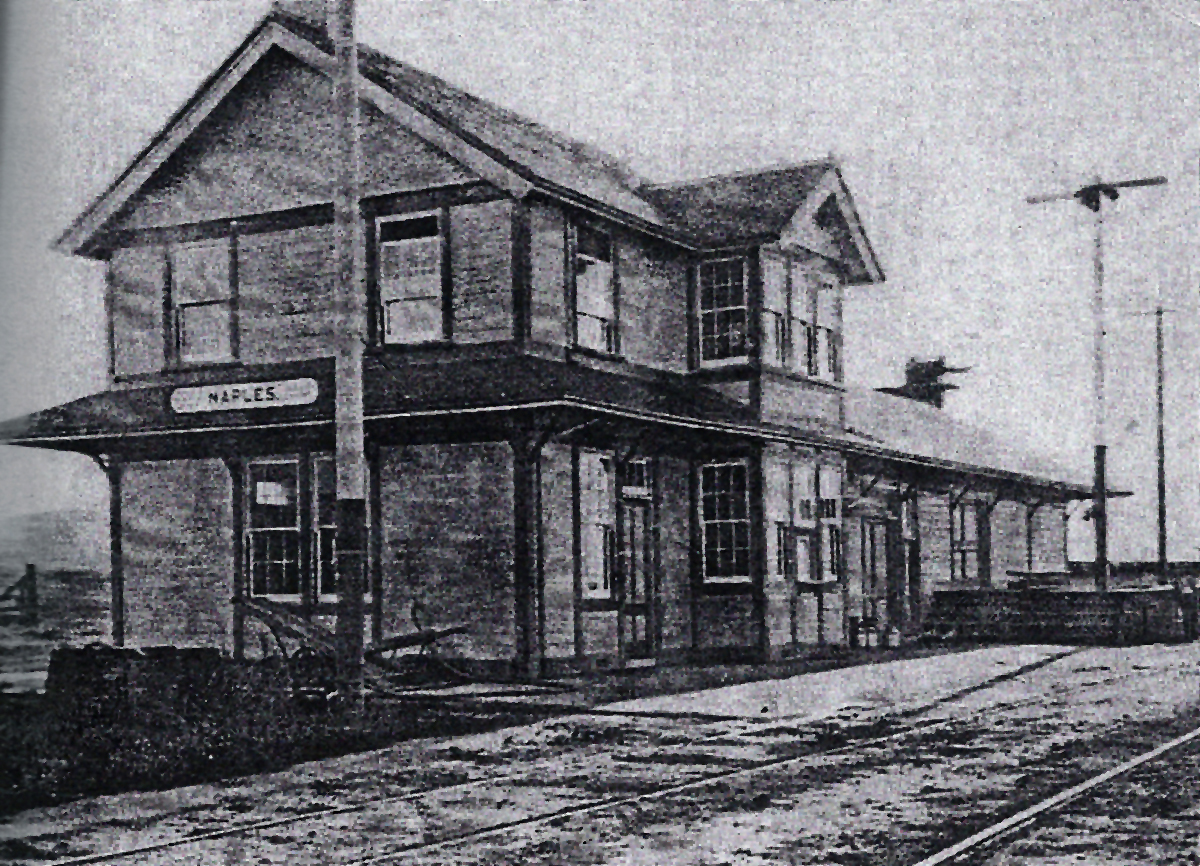
…Naples, Gaviota, Surf (Lompoc) , Guadalupe….

and Oceano.
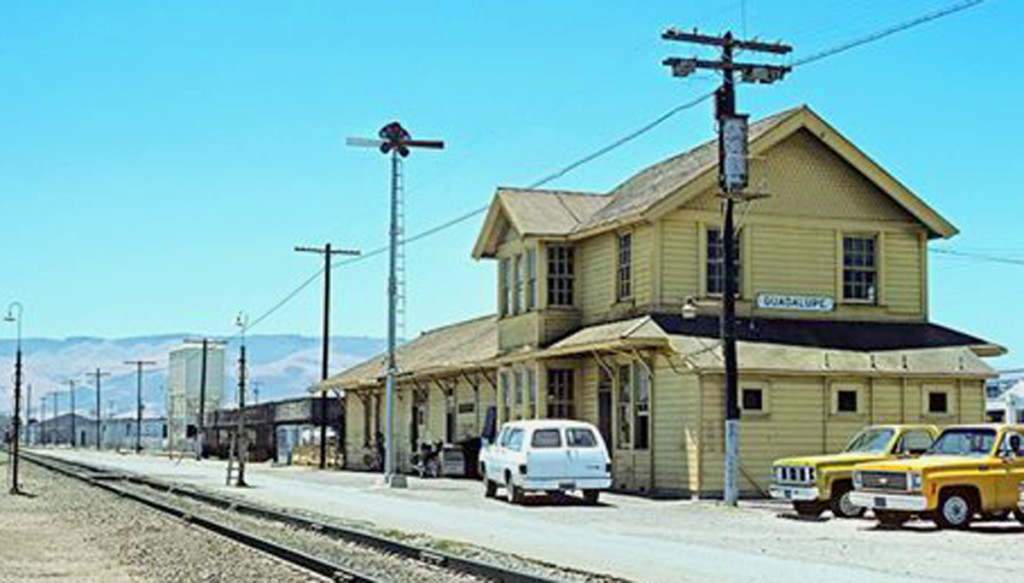
They were called “Combination Stations” because they served as a passenger terminal, a freight facility, a station to issue train orders and a home to the agent and his family.
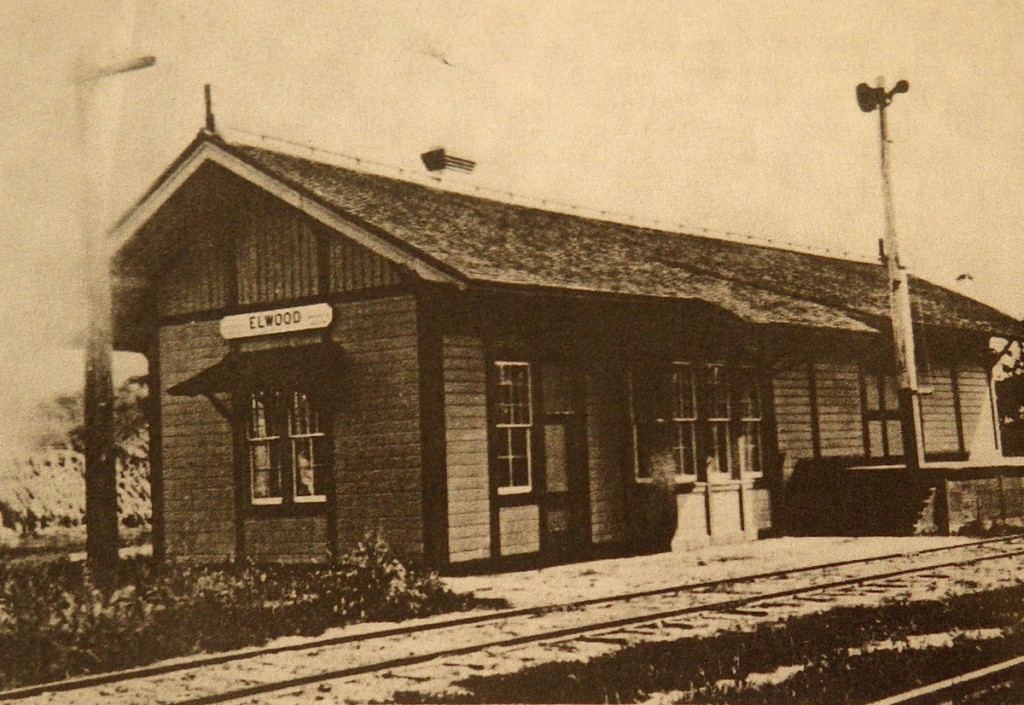
As you can see the Ellwood Station was a variation on the design, only having one story.

The original location of the Goleta Depot was on Kellogg Avenue in Old Town Goleta.
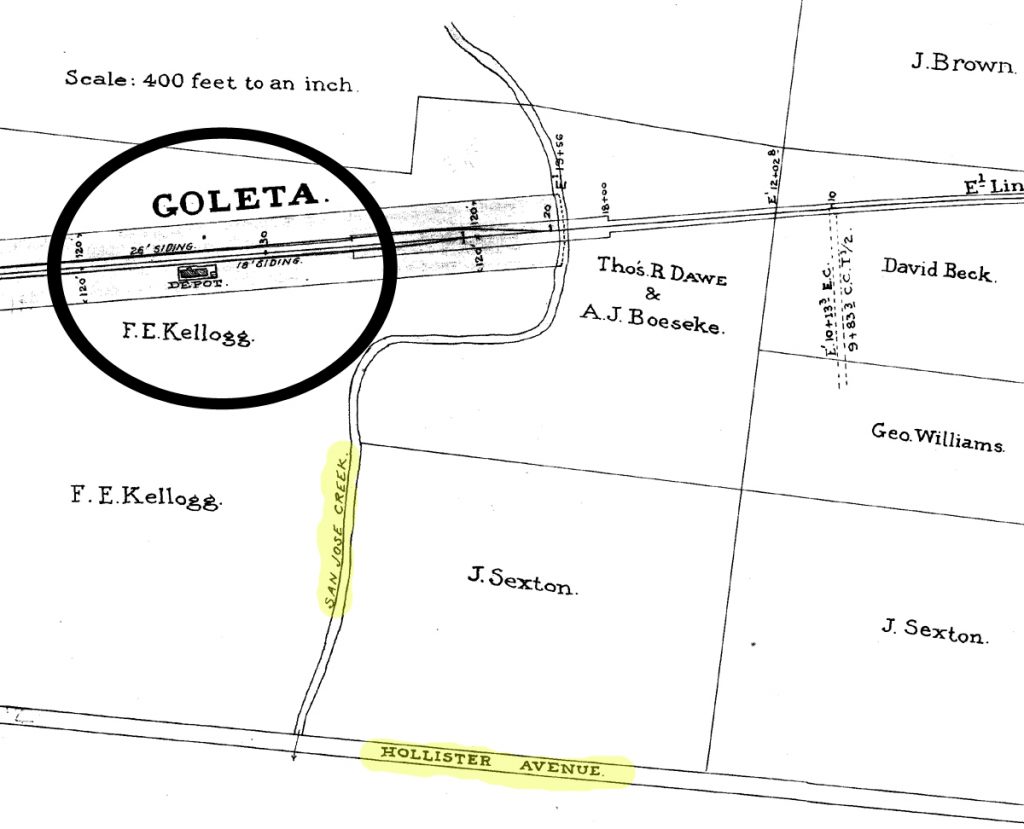
The location for the new Goleta station was generously donated by the Kellogg family. They deeded about 8 acres to Southern Pacific in February 1901 under the agreement that a working station be built and maintained there. It wasn’t just a generous act, it was a smart business move.

Frank Kellogg knew having the train station right next to his walnut packing plant and dairy would be beneficial to him, but it was a good thing for all of Goleta. All the farmers in the area were happy to have a local place to ship out their goods.

At the turn of the century, a train station was the transportation and communication center, and in turn it was the heart of a small town. It was where visitors and mail came and went. The connection point to the outside world.
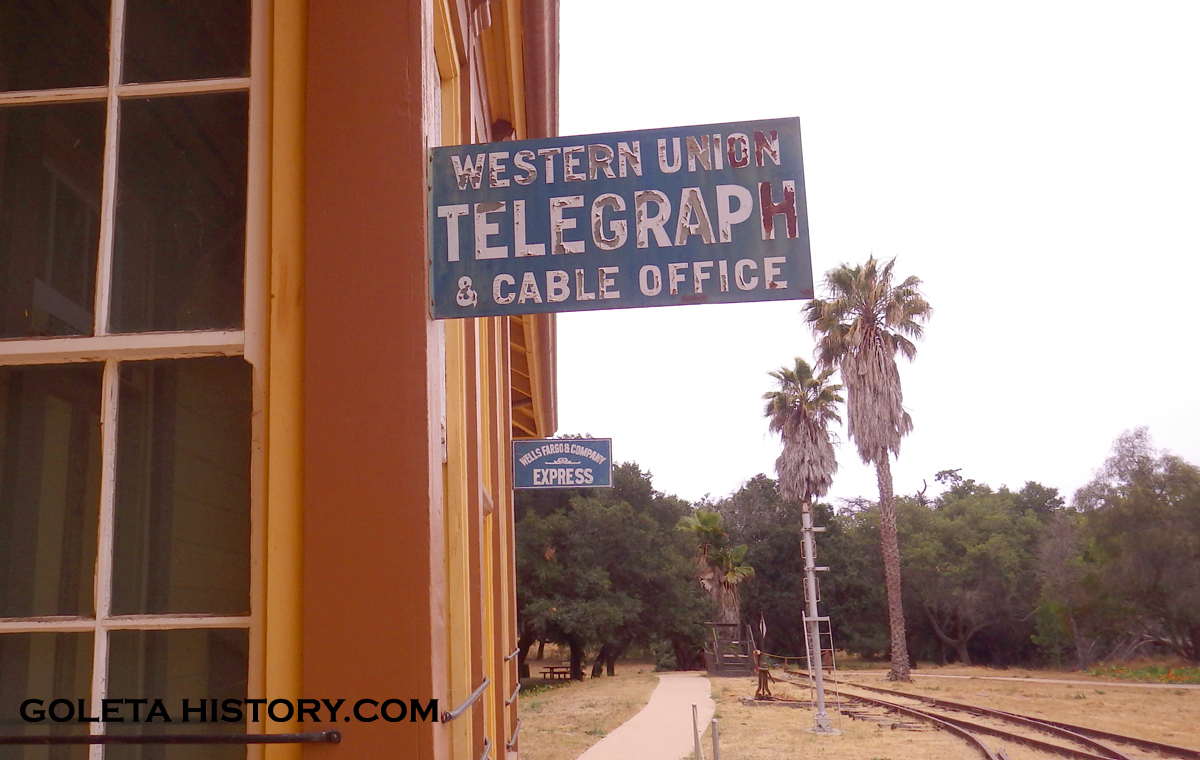
Not only did the train bring the mail, it was also where you went to send the most modern method of communication, a telegram.
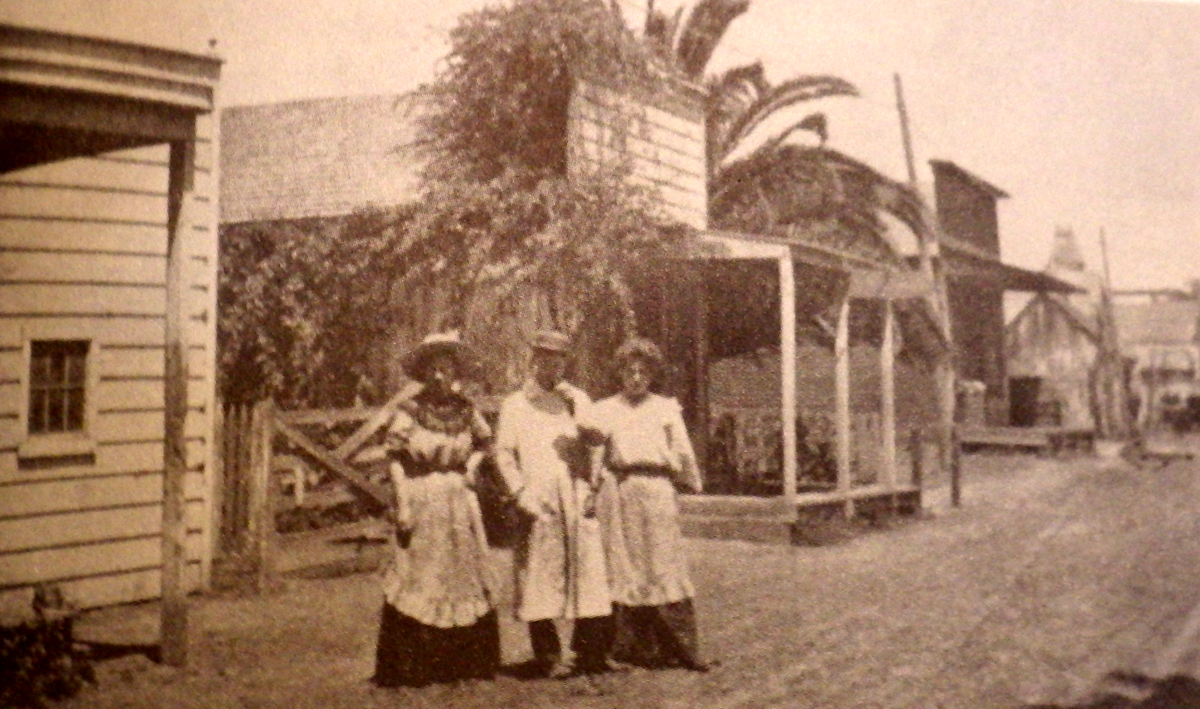
The train depot was the social hub of early Goleta. On summer evenings, farmers would gather and share stories, and their families would gather with them. It was a nightly gathering of the community where neighbors caught up, kids played and teenagers flirted.
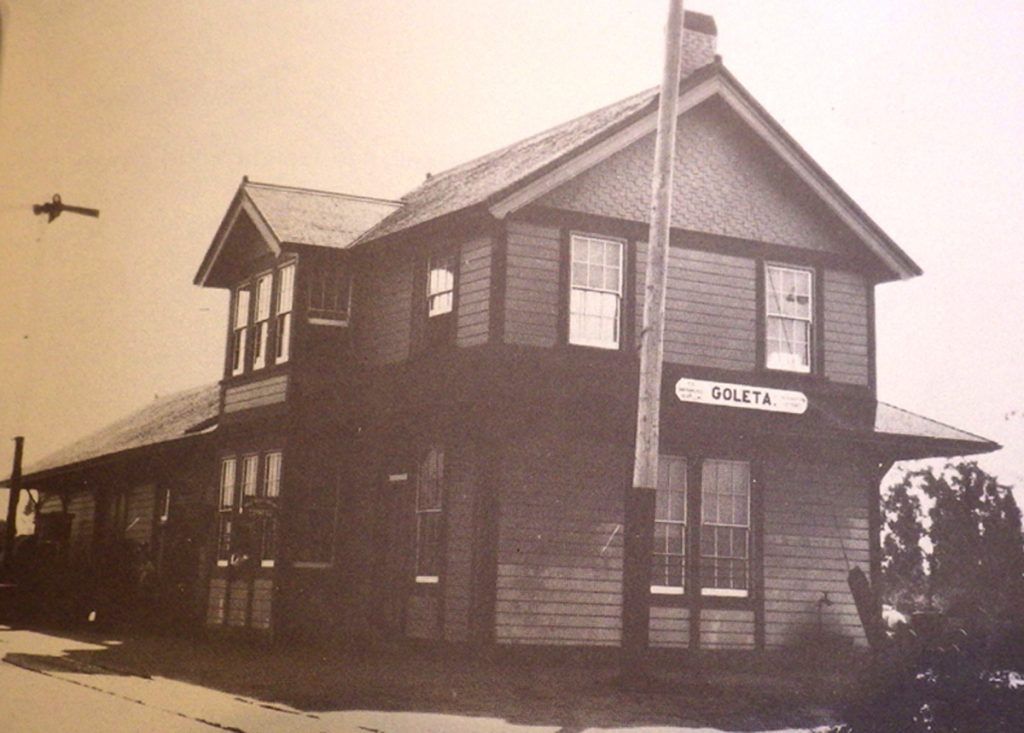
But while it was social center, it was also a home for the stationmaster. Running a local agency was a very desirable position because it came with living quarters. Only a railroad man with a lot of seniority would be considered for this job, and the station at Goleta was in high demand.

The stationmaster had a multitude of jobs, including freight handling, ticket sales, accounting, telegraphy and issuing train orders. He was on call 24 hours a day, 7 days a week. There were several different stationmasters over the years, and some were more social than others. But every stationmaster was a hero to the local boys, not only because he was in charge of all the trains and their cargo, but because he could send and receive messages on the mysterious telegraph.
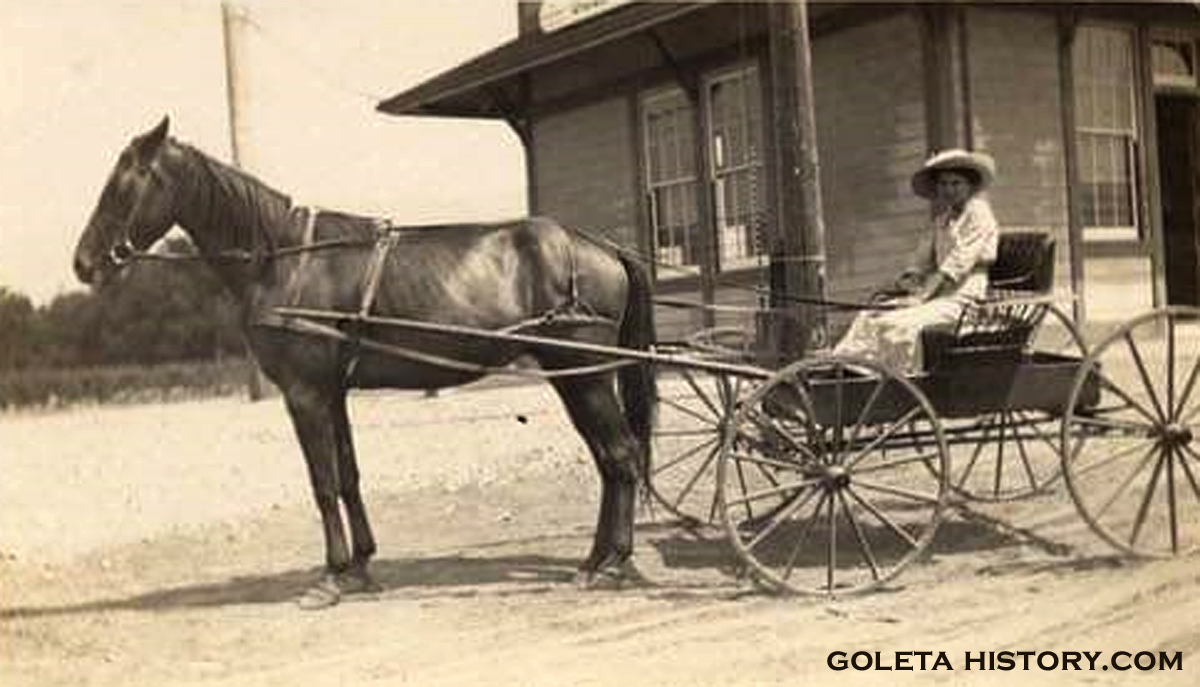
Prior to the 1920’s, the roads to Santa Barbara were not paved, so the trip from Goleta was a long one. Since there was no high school in Goleta until 1959, Goleta kids had to make the trek to Santa Barbara High School.
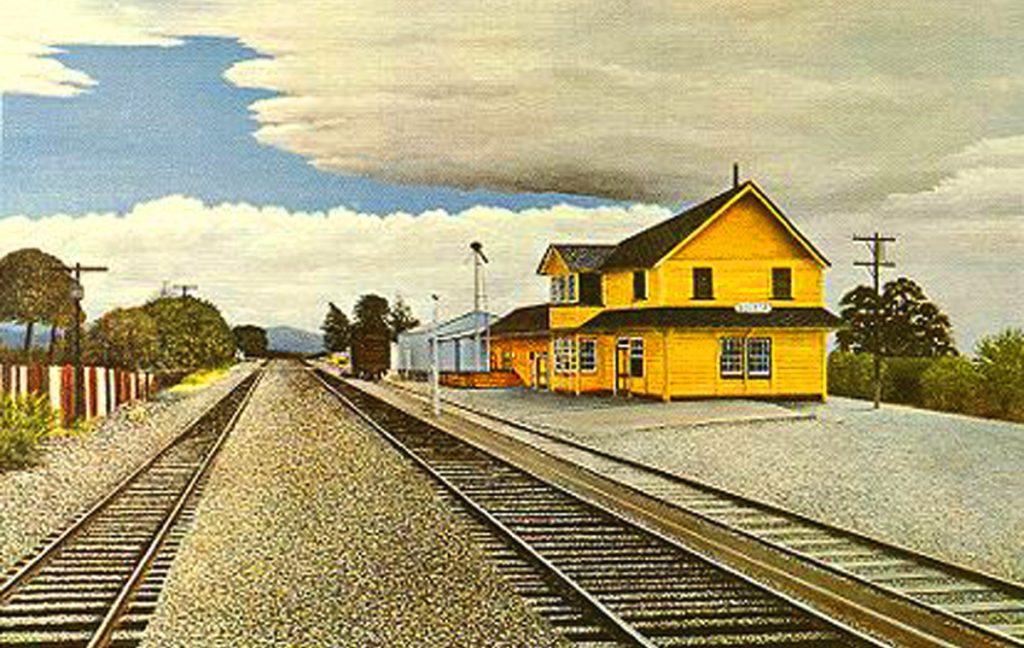
Many of them took the train to town on Sunday night and stayed in Santa Barbara with friends or family until Friday! After the roads were paved, local train trips became more of a novelty.
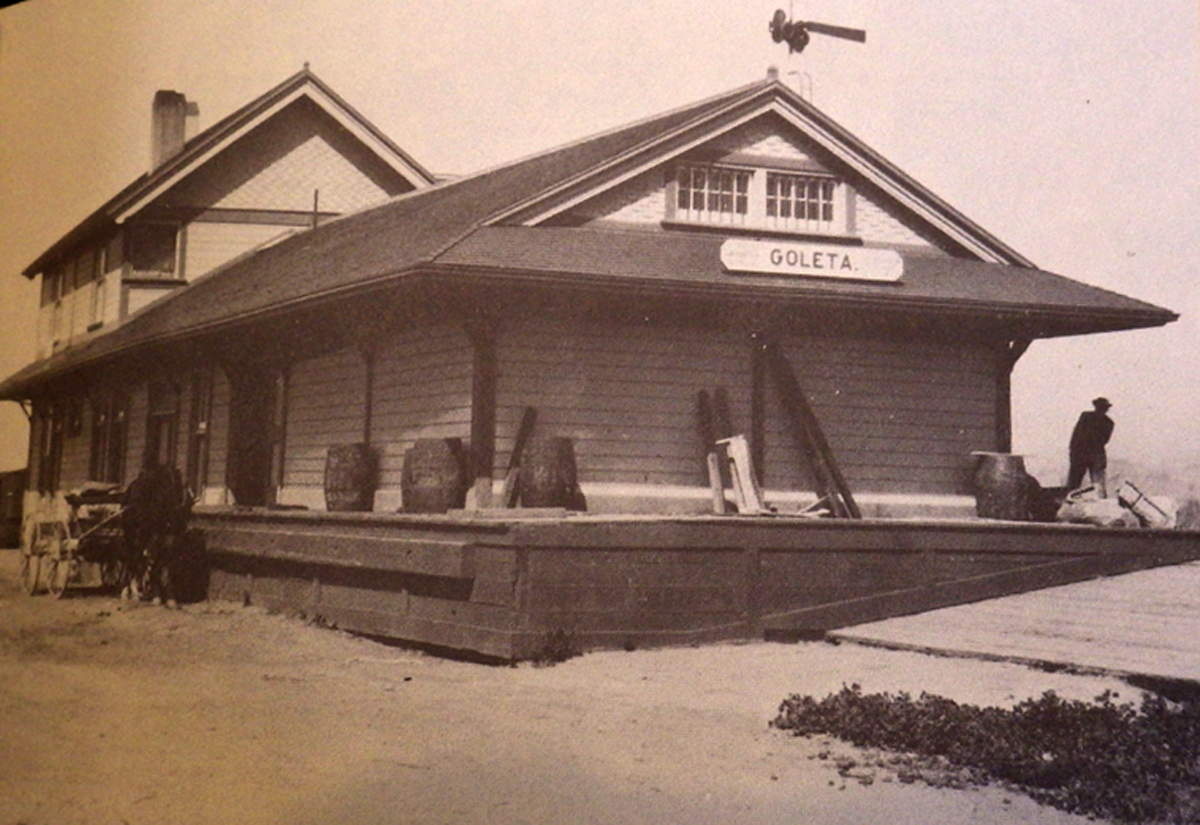
The depot was the departure point for Goleta’s agriculture goods and it was the entry point for any and every shipment coming to Goleta. From fresh bread to heavy farm equipment to livestock, it all came by way of the depot.
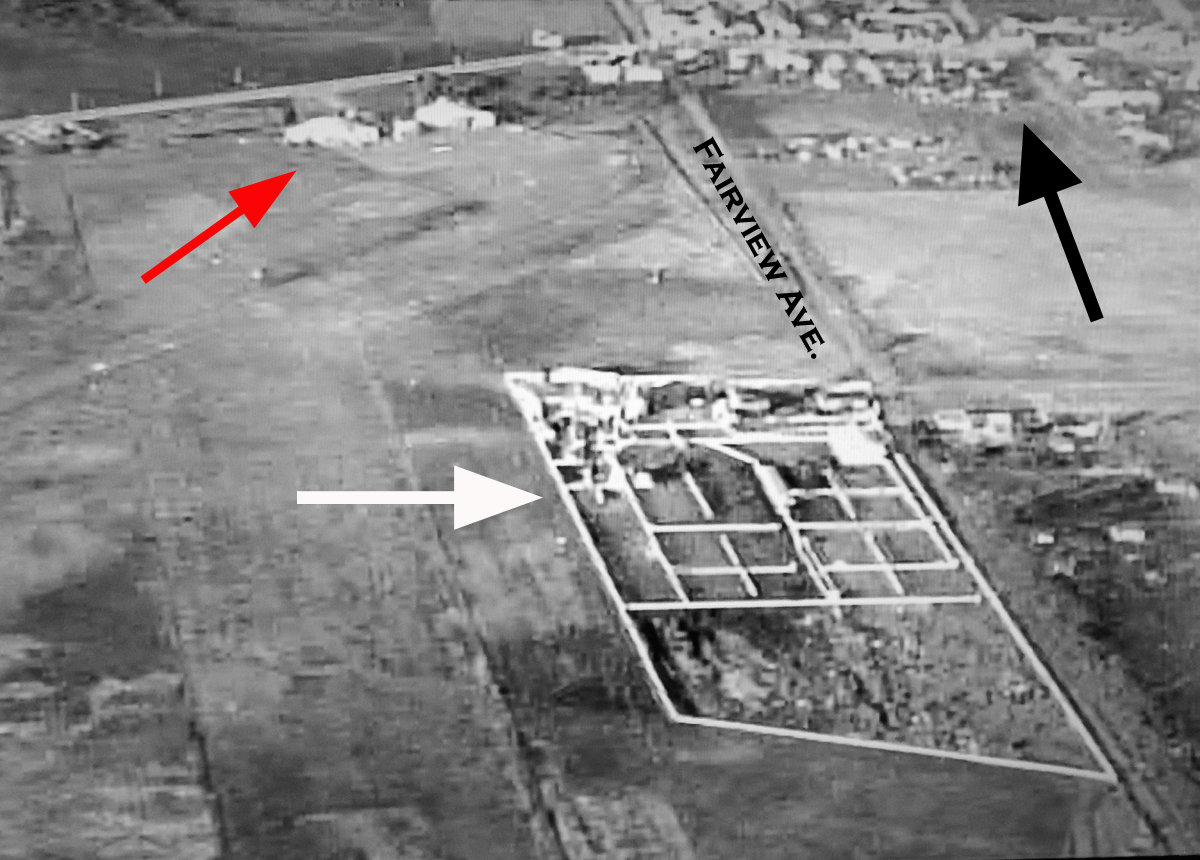
Frequent deliveries of cattle came in for slaughter at the Santa Barbara Packing Co. on Fairview Avenue, white arrow. The black arrow is downtown Goleta, and the red arrow is the Two Hangars.
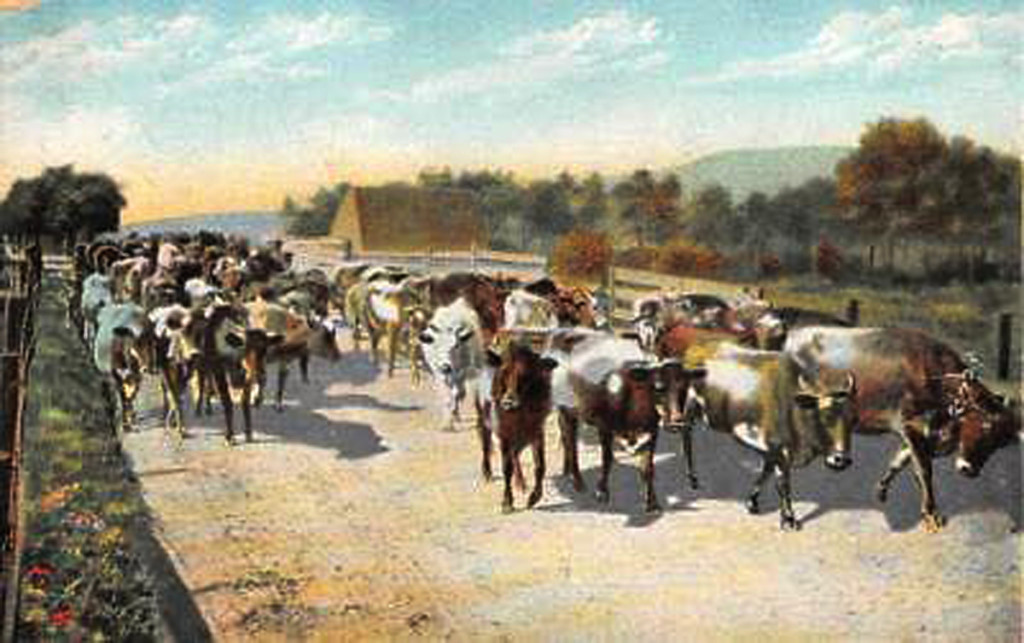
Once unloaded, cowboys would drive the cattle down Kellogg Avenue and then right down Hollister Avenue to the Slaughterhouse! Youngsters would climb into trees along Hollister for a good view of the spectacle. Talk about a cow town!

World War II saw the little Goleta airport transformed into a sprawling Marine base, and all the supplies to build it came through the little Goleta station. So many materials came in so fast they had to build a separate railroad siding dedicated to the base.
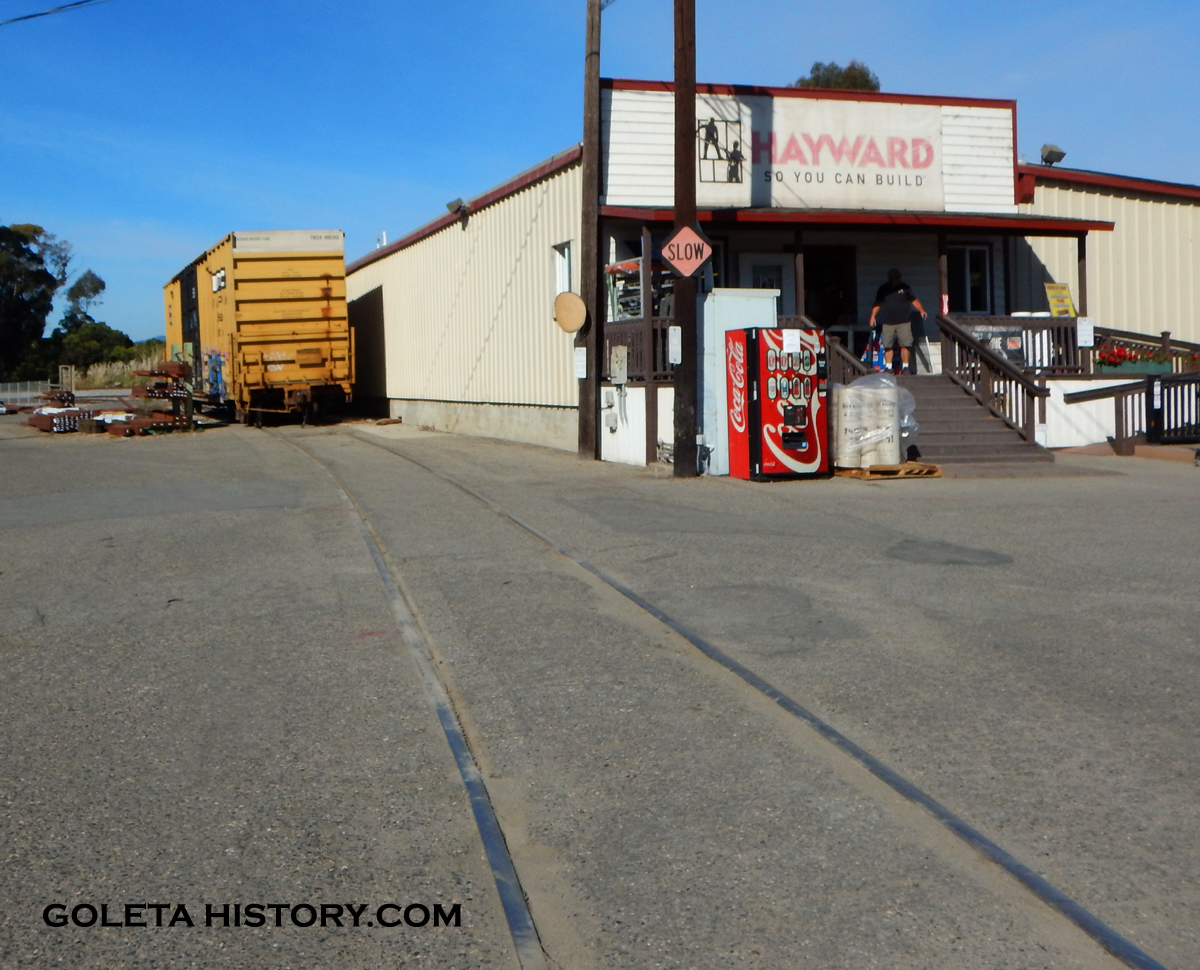
That siding is still being used today by a lumber yard!

All the men and women that made the base their home for a few years also came and went through the depot. Local residents recalled seeing troops marching through town to the train depot for their deployment elsewhere.

The majority of goods coming and going from the Goleta depot continued to be mainly agricultural until the late 1950’s, when the completion of the Cachuma Dam changed everything. Suddenly, the little cow town had an abundance of water, which brought in the University of California and an industrial research center, which brought in lots and lots of people. And these people needed houses….
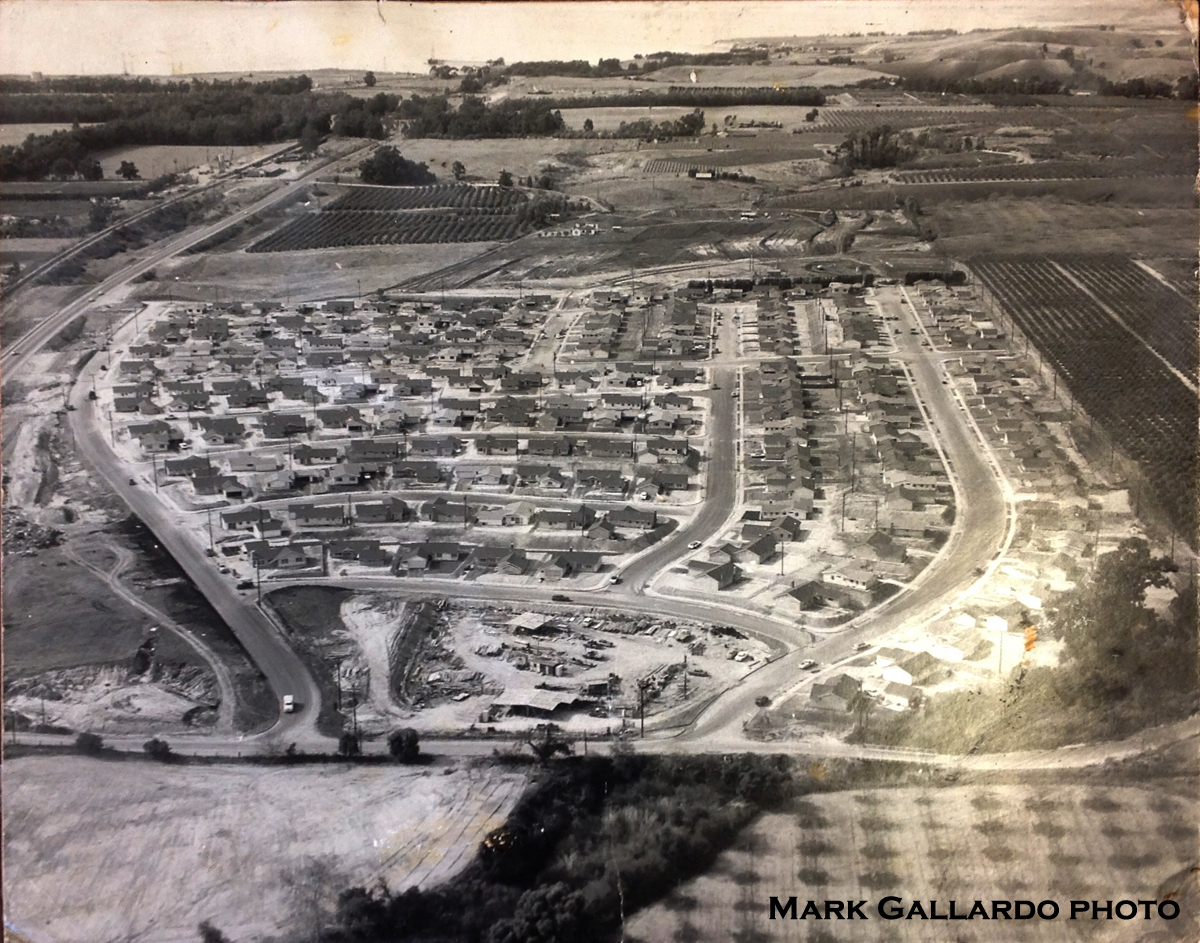
Ag lands were quickly being paved over to make room for all these people, and all the supplies for this avalanche of construction came through the same little railroad depot. For the first time there were more shipments coming into Goleta than going out.

About the same time as all this growth, the roads were greatly improved. Automobiles and semi trucks made the railroad seem old fashioned and slow.

By the mid to late sixties the number of passenger trains passing through Goleta was greatly reduced. Computers eliminated the need for stations to issue orders to trains. One by one the stations along the coast route began shutting down.
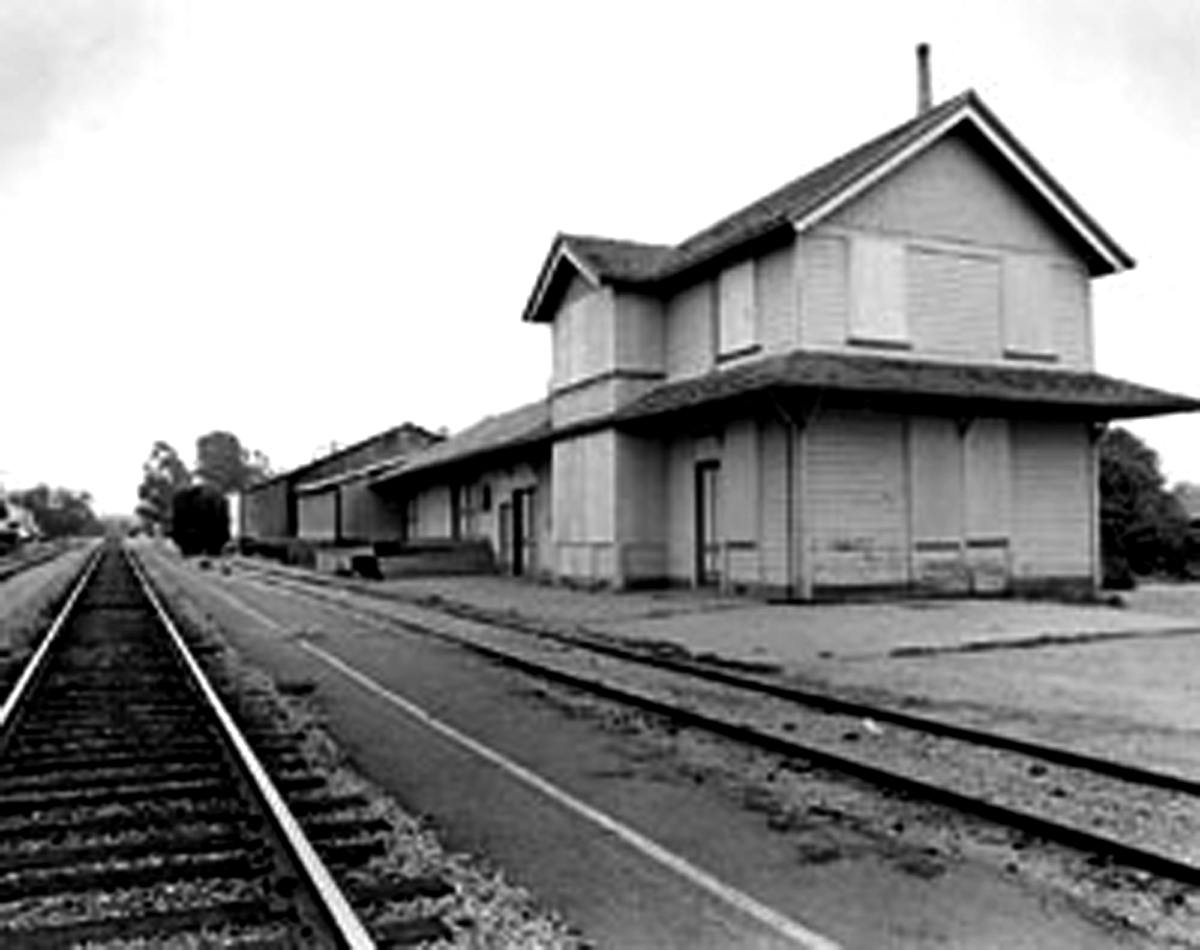
In 1973, Southern Pacific workers came and boarded up the old building, removed all company property and that was the end. The depot’s decades of loyal service to the railroad and the community was over and done and quickly forgotten. But unlike the other stations up and down the coast, the Goleta station wasn’t demolished immediately.
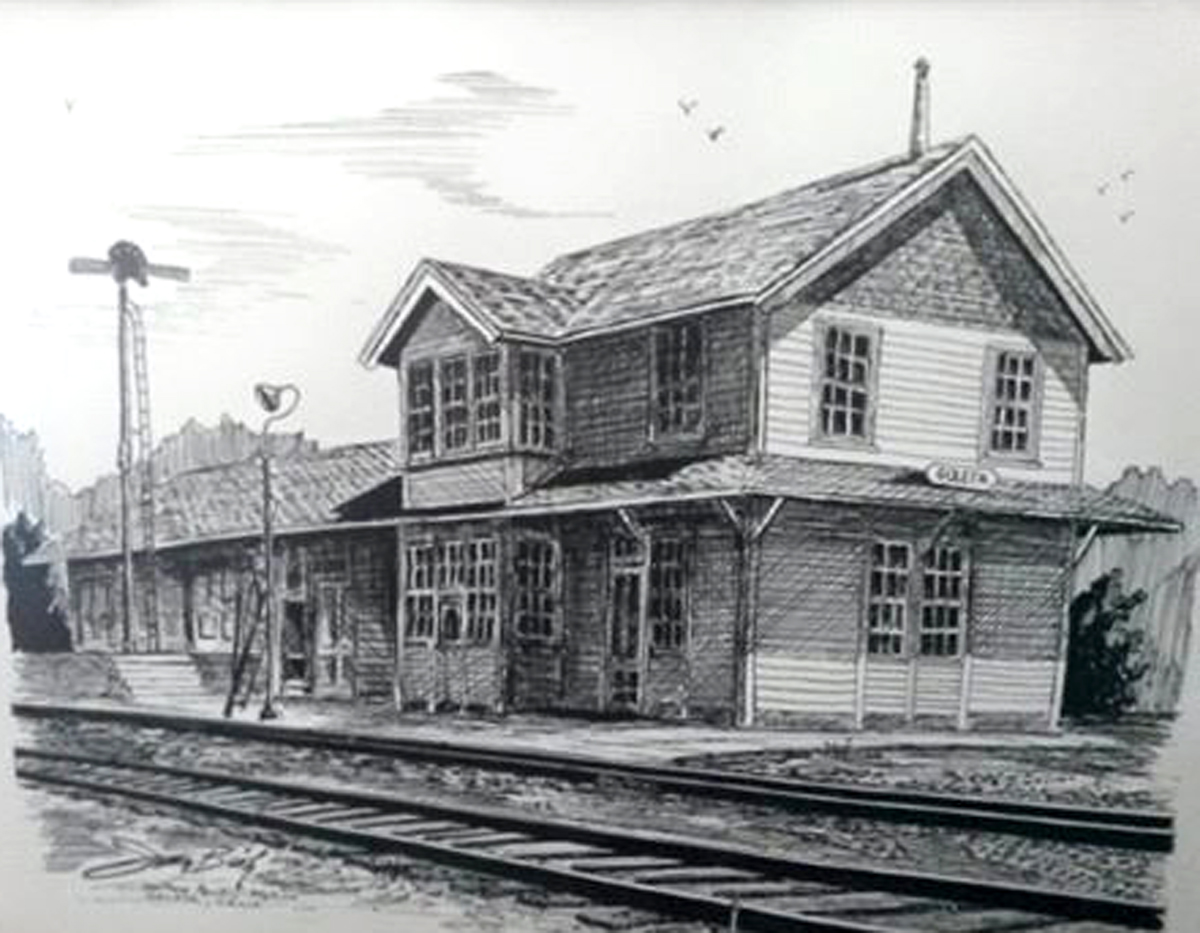
The Kellogg family and Southern Pacific were locked in a lawsuit concerning the real estate, so nothing could be done with the building. Now just an empty shell without a purpose, the old depot became a haven for looters and vandals. Throughout the rest of the 1970s it sat empty and neglected.

The windows were all broken out and any and all fixtures were stolen or destroyed. Transients camped inside it and graffiti tainted its once proud espee yellow exterior. Fires broke out inside and around it and the News Press called for its removal, for the safety of the citizens.
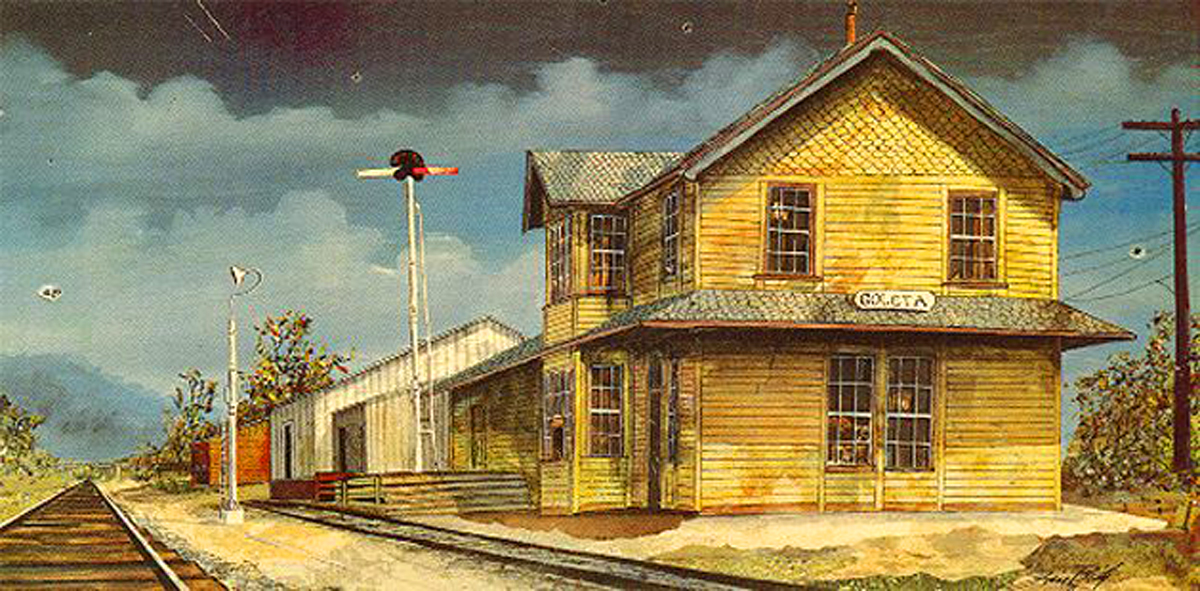
In the meantime, all the other coastline depots; Carp, Naples, Gaviota, Surf, Guadalupe, had all been demolished. Thanks to the prolonged legal battle, Goleta depot became the oldest surviving train station in Santa Barbara County! Locals started talking about saving the depot for the historic relevance. Artists began painting pictures of it in its heyday. The Goleta Valley Historical Society worked with the Southern Pacific to get rights to the building, but the pending lawsuit made it impossible, so in 1977, they gave up.
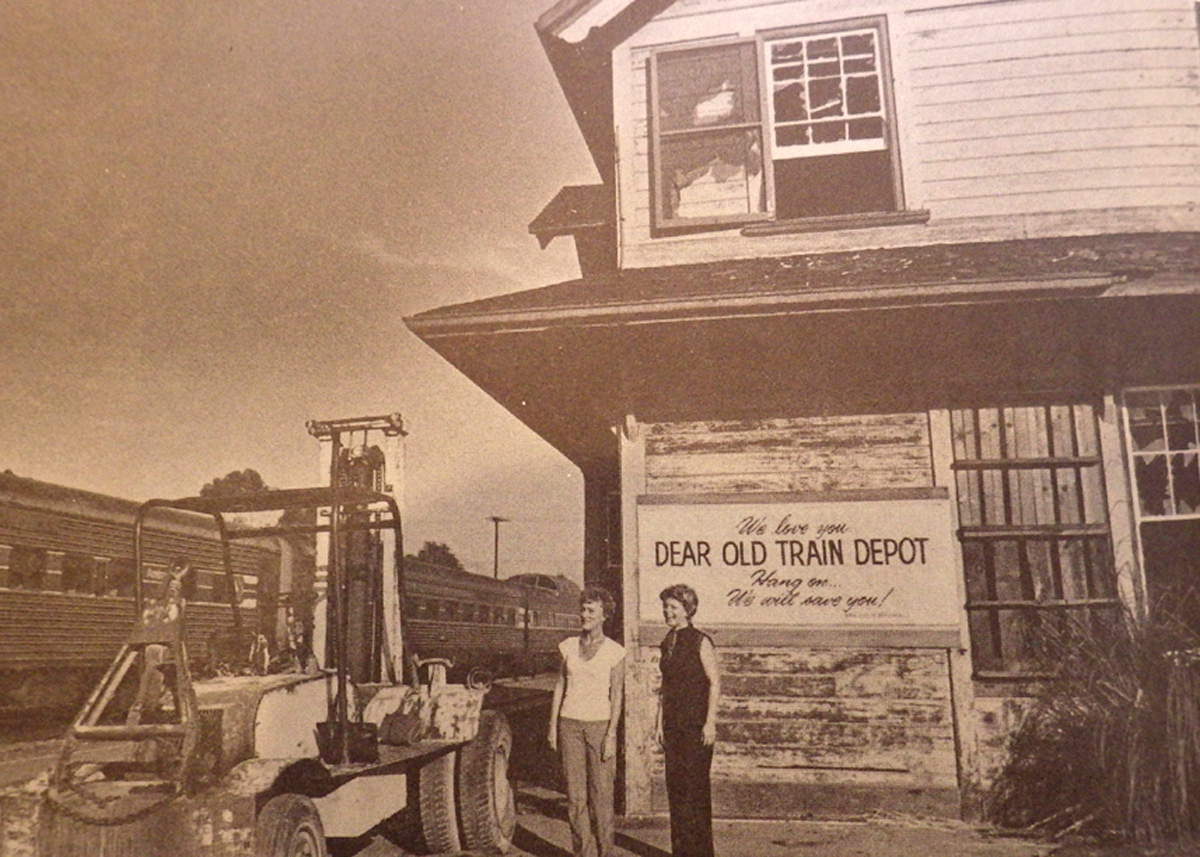
In 1979, a community group called Goleta Beautiful picked up the cause and in 1980 a Goleta Depot Committee was formed to get organized and raise funds for the monumental task ahead of them.
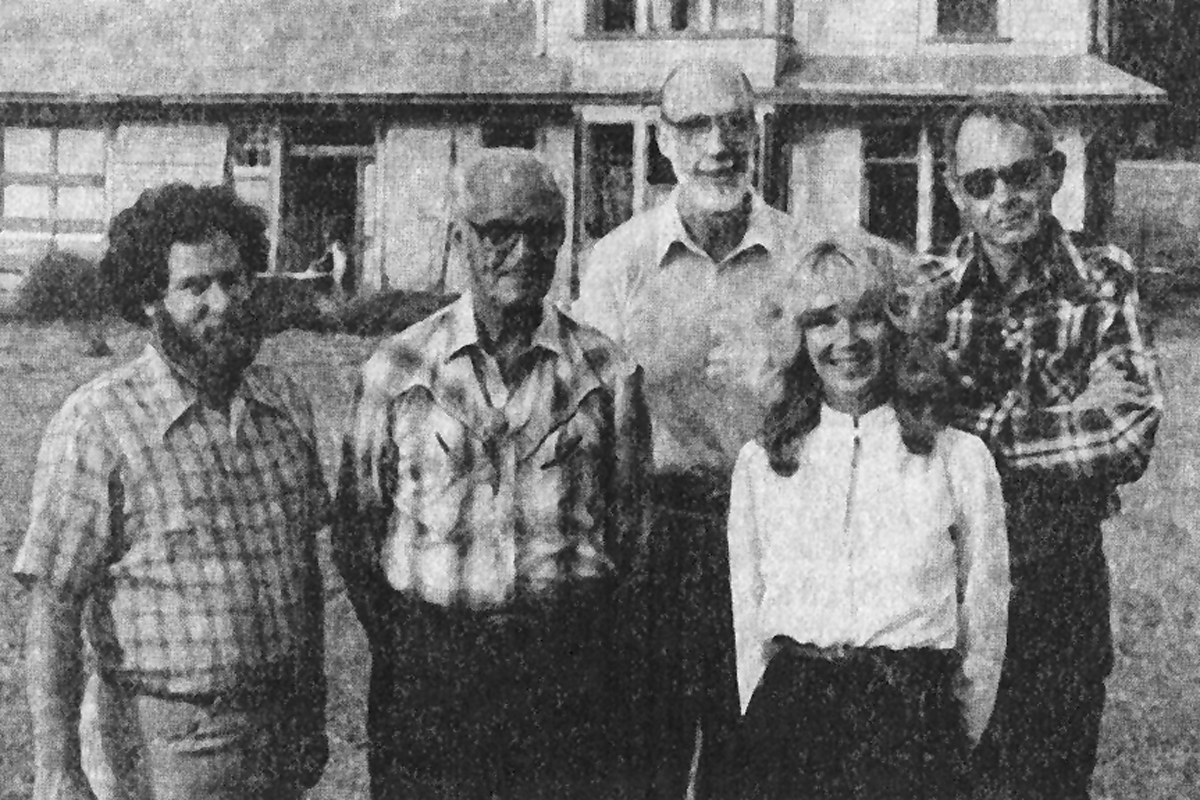
The Committee was led by Gary Coombs and it included George Adams, Raymond Baird, Phyllis Olsen and Eugene Allen. The following year, 1981, a settlement was reached between the SP and the Kellogg heirs. The Kellogg family donated the depot to Goleta Beautiful for them to restore and preserve for future generations. But, somewhere else, not where it sat presently…
Which posed some BIG problems. Where would they move it to? How would they move it? How would they pay for that?
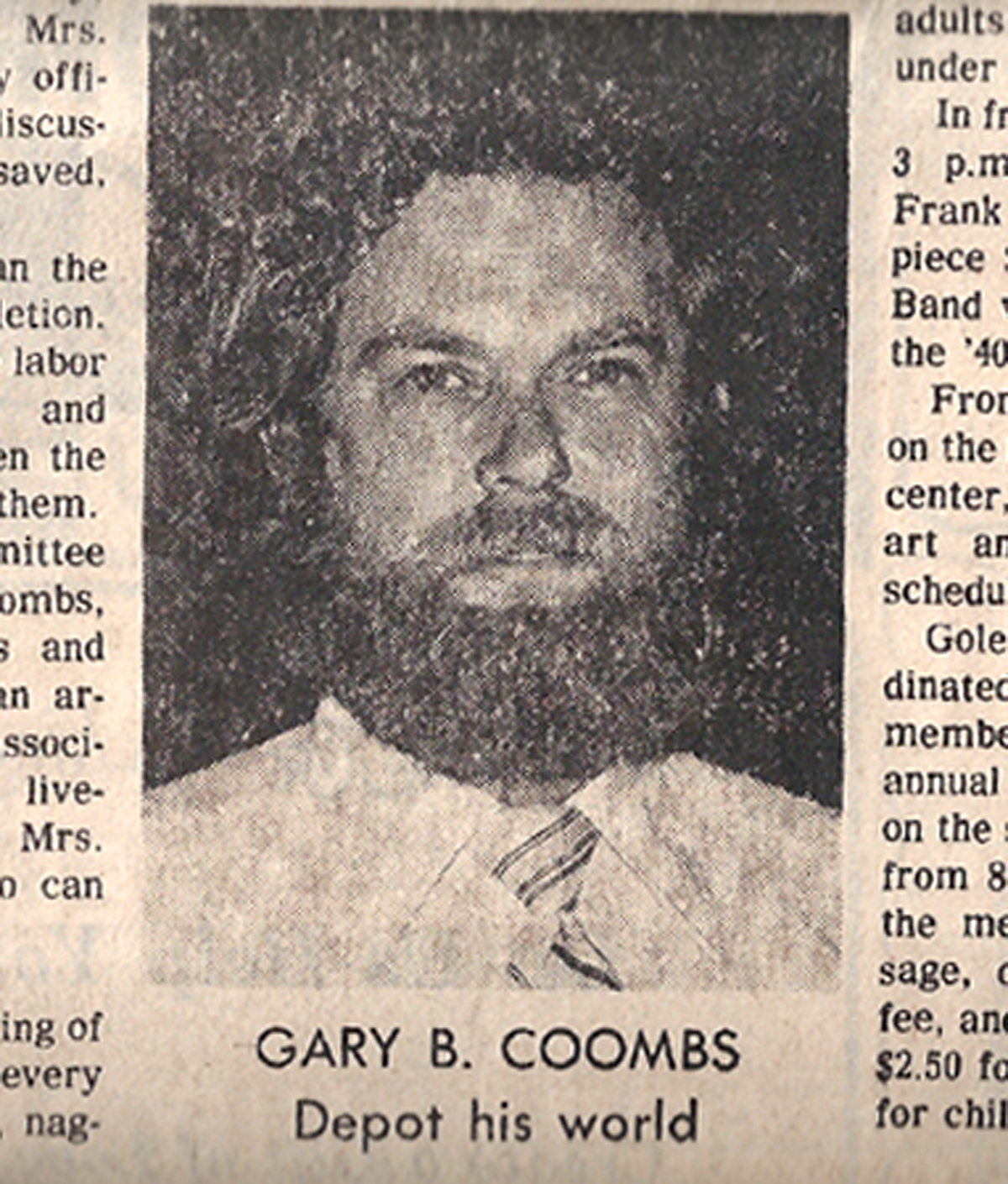
When the News Press prints that something “is your world”, that probably means you’re pretty passionate about that thing. Gary Coombs was the motor pushing this giant project and he was relentless in his efforts.
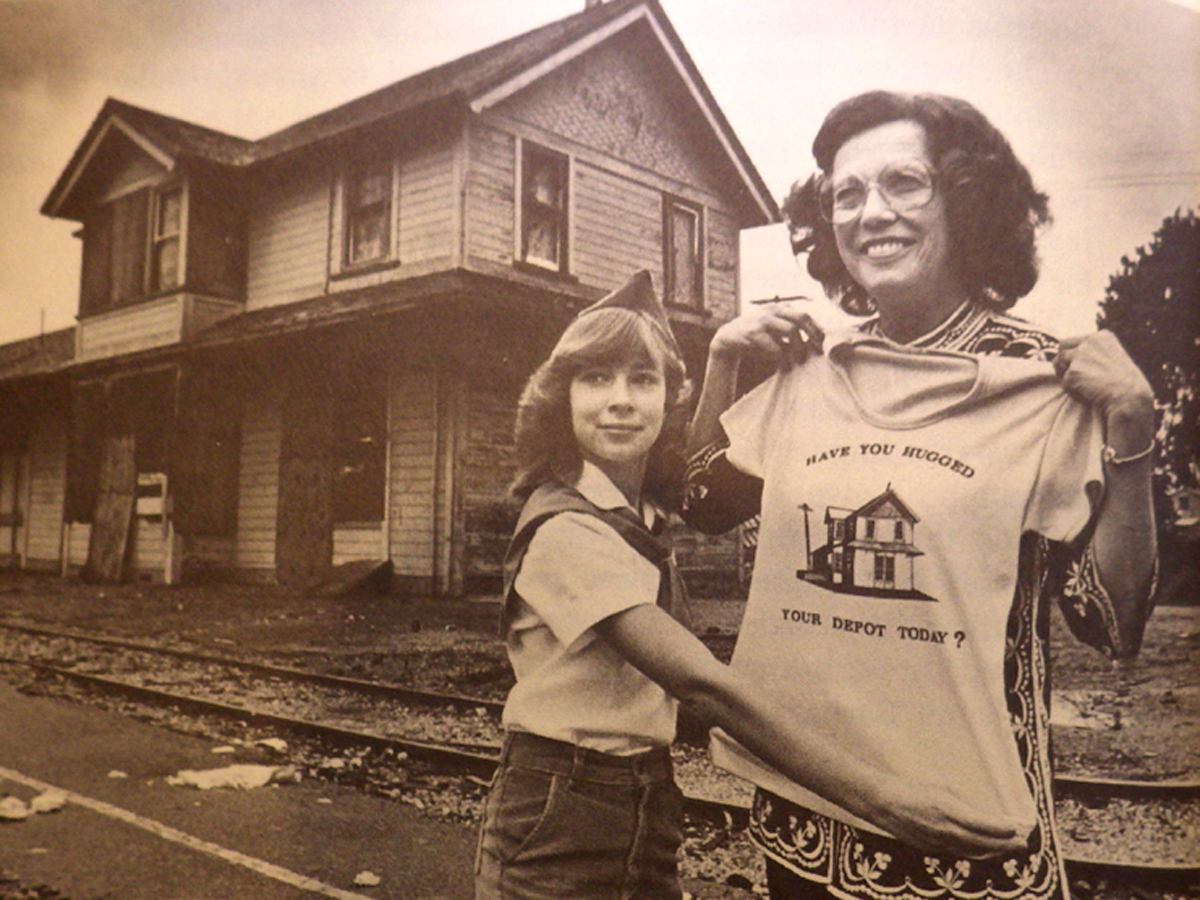
Lots of other organizations got involved and a new group, called “Friends of Goleta Depot”, was formed. They put out a monthly newsletter to keep the public involved and up to date on the progress.

A series of fund raising events were organized, including auctions, dinner-dances, raffles, sales of custom T-shirts, caps, patches, and artwork, hot dog sales, and walk-a-thons. Grants were sought and received from local foundations and large corporations.

Finding a new location was another daunting task. Affordable options were narrowed down to the Elks Lodge property on North Kellogg, behind the Community Center in Old Town or the county owned property at Los Carneros County Park. After much debate, the Los Carneros location was chosen, and preparations began.

By September 1981, Goleta Water District approved a permit for the new location and enough money had been raised to finally begin moving the old depot. Using chainsaws, the moving crew cut the building into two pieces and prepared them for loading onto trailers.
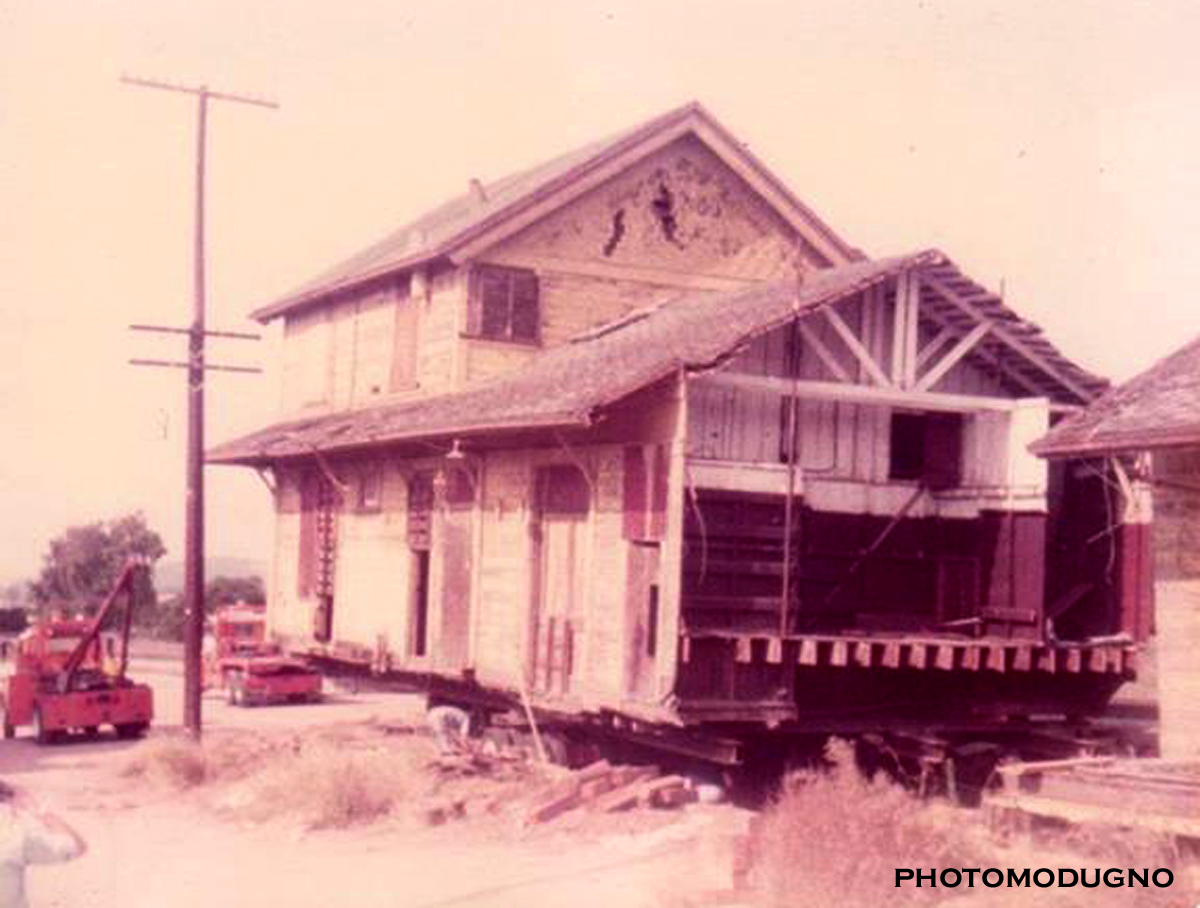
After several days the depot was finally loaded onto two trailers and ready to make the arduous trek through Goleta, to its new home on Los Carneros.
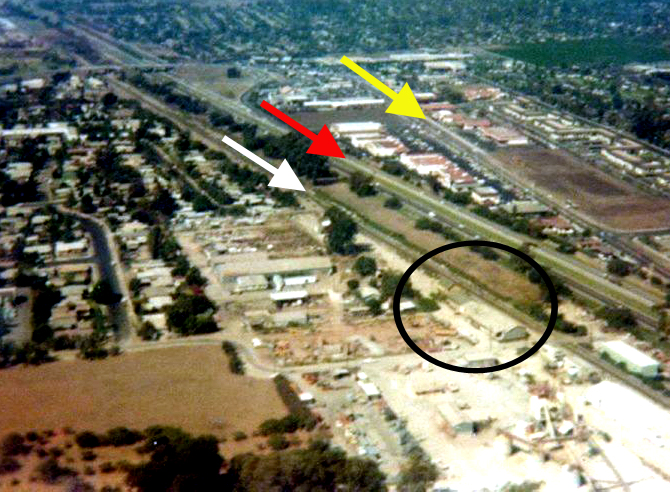
The original depot location is shown circled in this 1977 photo. The white arrow is the railroad, the red is Highway 101, and the yellow is Calle Real. The route was to go up Hollister Ave, to Fairview, over the overpass, and turn left on Calle Real to Los Carneros.
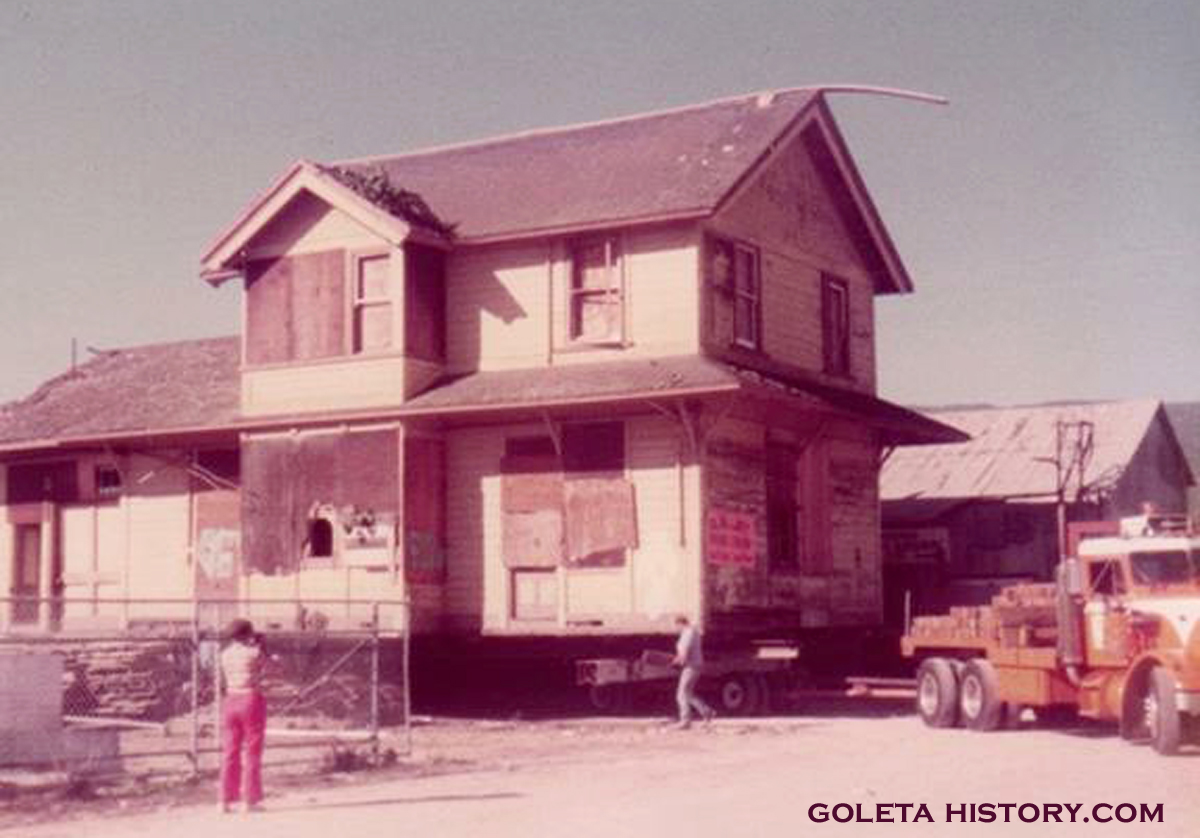
Last minute preparations were made, trees along the route were trimmed back, notifications were given, and the weatherman was asked to keep the rain from coming!
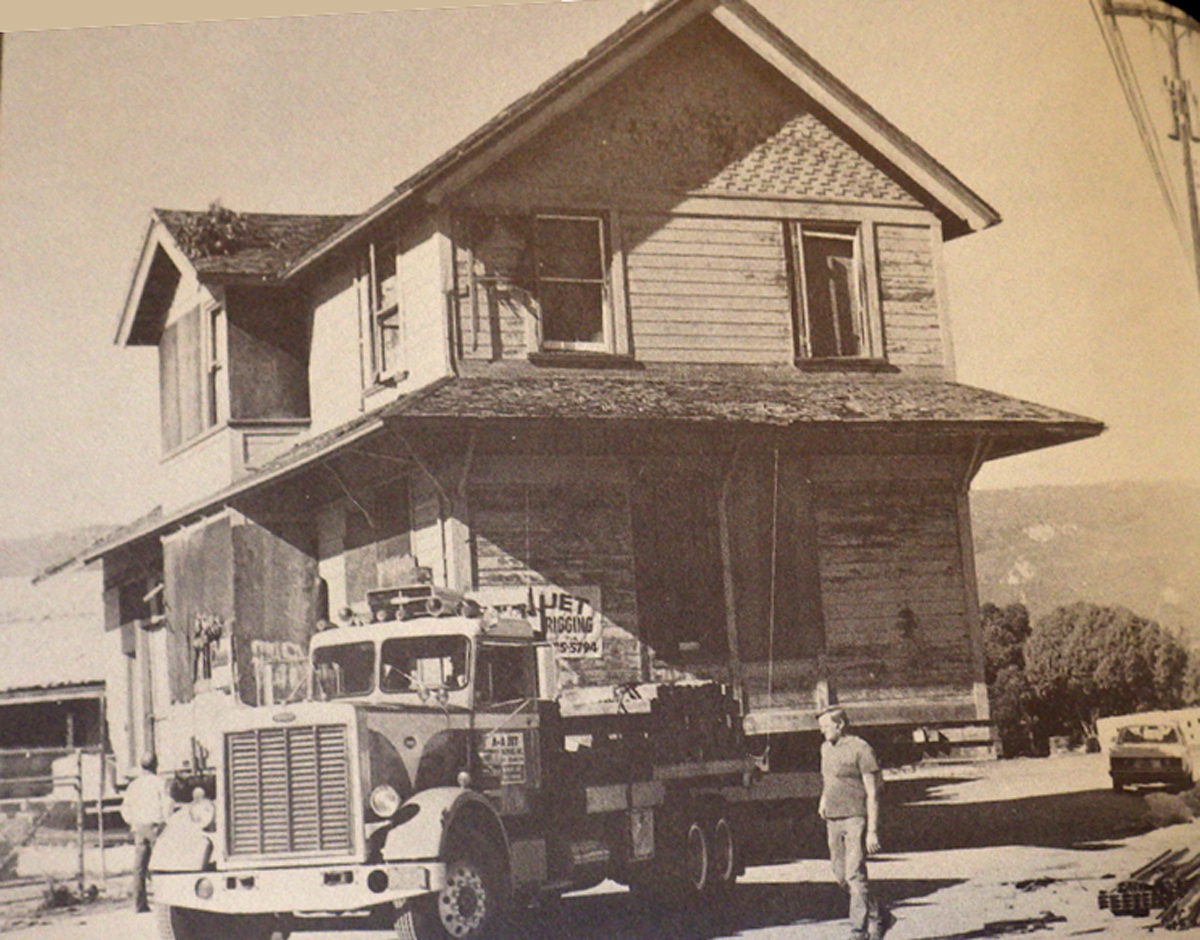
On Wednesday afternoon, November 18, 1981, the move began! It took 2 hours to get the two halves down Kellogg Ave, about to where the Jonny Wallis Park is today.
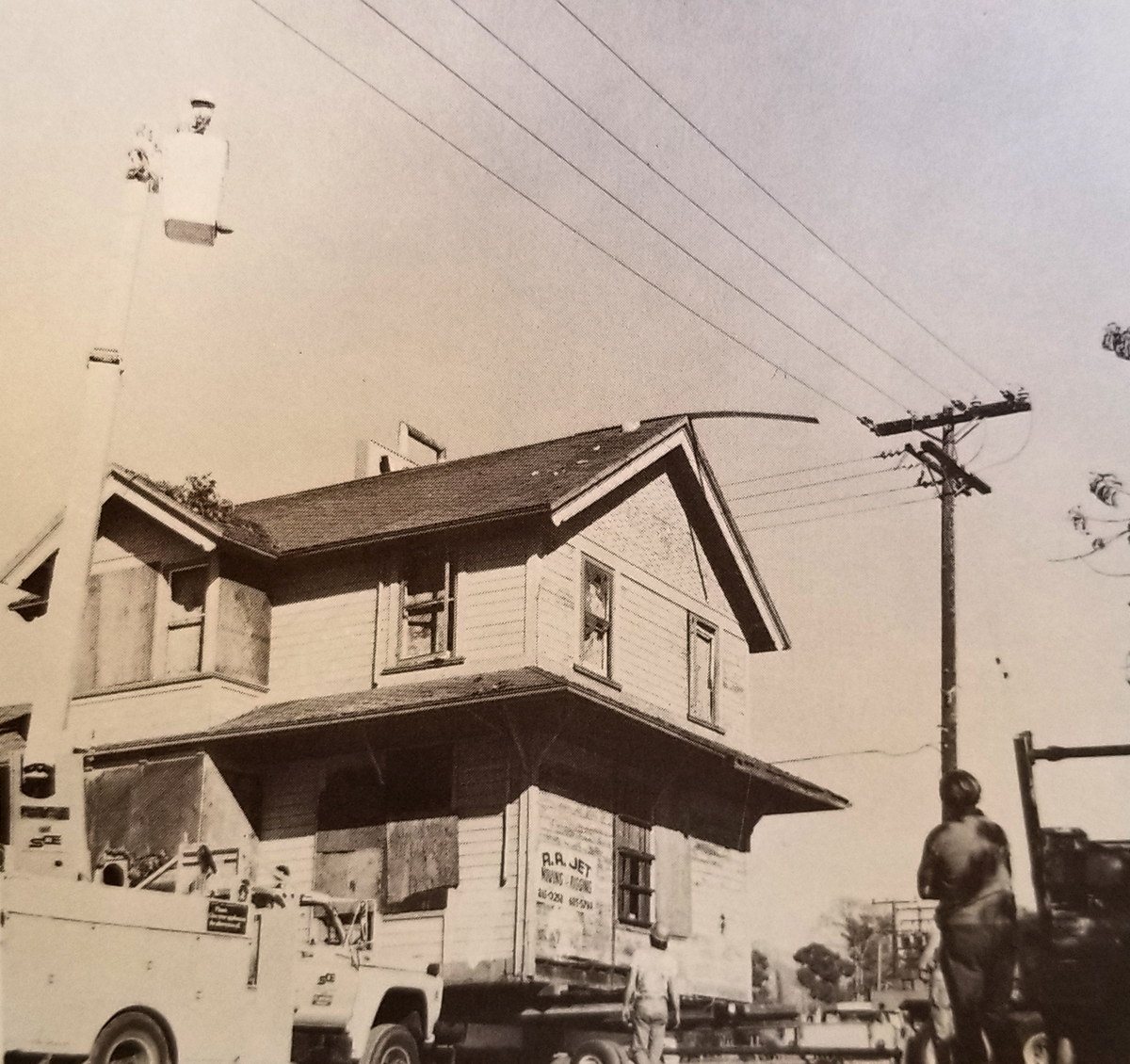
One reason it took so long was power lines had to be manipulated to let the structures sneak underneath them. While this painstaking work took place, a large crowd of media and citizens gathered to wish the loved old building safe travels. There was a lot of concern about how the fragile wood frame would handle the journey ahead.
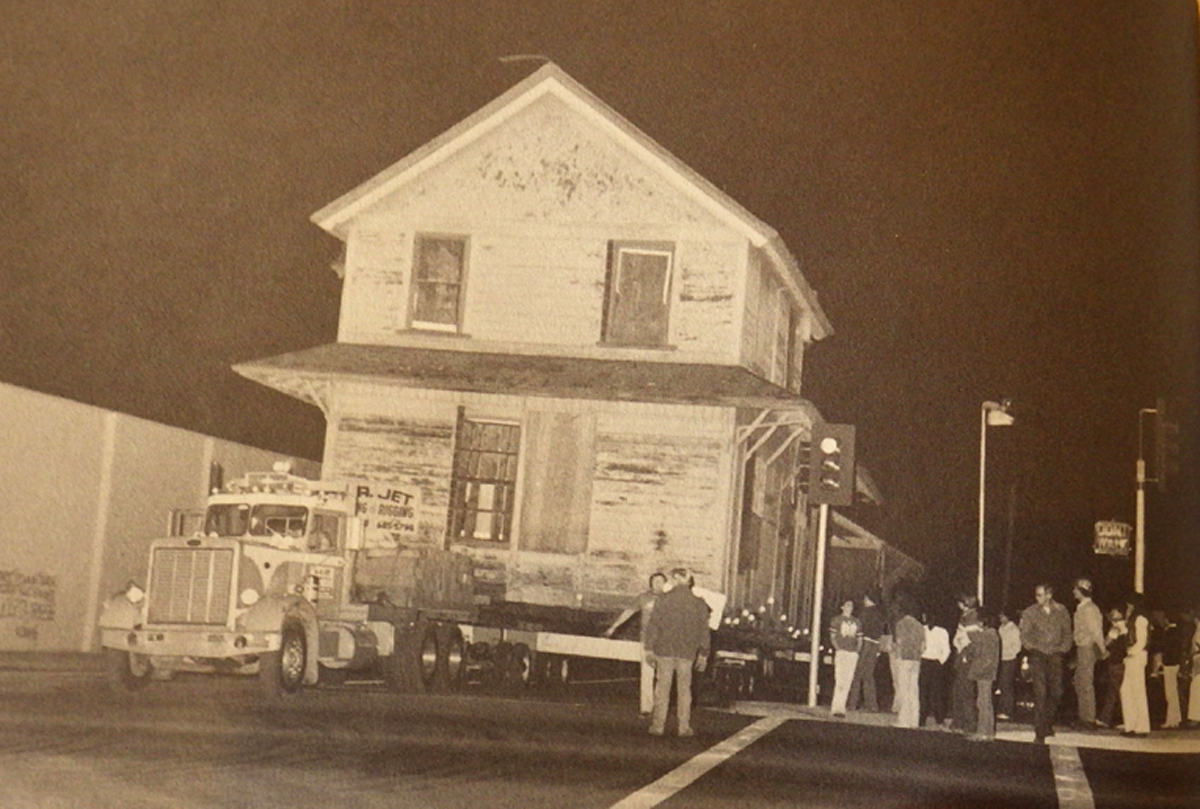
The move resumed late in the evening, the big diesel trucks carefully pulling their precious cargo as steadily as possible. A few dedicated fans were still on hand, but most of the town had gone home and to bed. Pictured above is Hollister and Kellogg.

After midnight, the oversized loads came lumbering slowly down Hollister Avenue, swerving from side to side to avoid the lights and signs hanging over the street. Quite a spectacle for sure.

One spectator accompanied the procession with a recording of whistles and steam locomotive sounds. As they passed a bar on Hollister, probably Gus’s, a late night patron stumbled out to see what all the commotion was. He caught a glimpse and ran back inside screaming, “It’s not a train, the whole depot’s going by!” The bar emptied out onto the sidewalk and all began cheering and throwing their loose change into the street. (The change was collected later by committee members to help pay for the renovation project.) That’s Larry’s Auto Parts on the right and in the distance the sign for Barclays Bank.

As the depot halves went over the Fairview overpass, motorists honked frantically in support of the huge undertaking. There was concern about the weight of the load getting up the overpass, passing over the bridge and coming down the other side, but thankfully there was no problem!
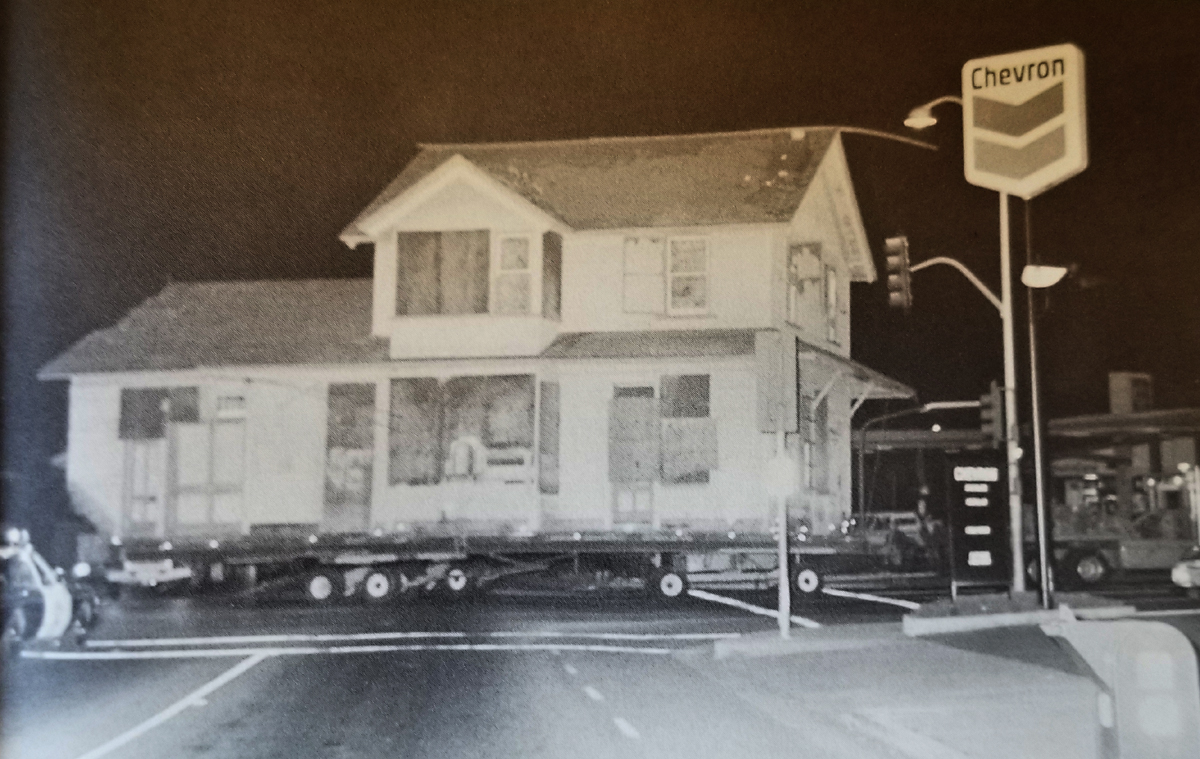
The trailer trucks swung wide onto Calle Real and into the longest stretch of their journey. Sections of Los Carneros were narrower than the depot, and the trailer wheels were often off the edge of the asphalt. The guys that loaded it up did a fantastic job as the load rode sure and steady.
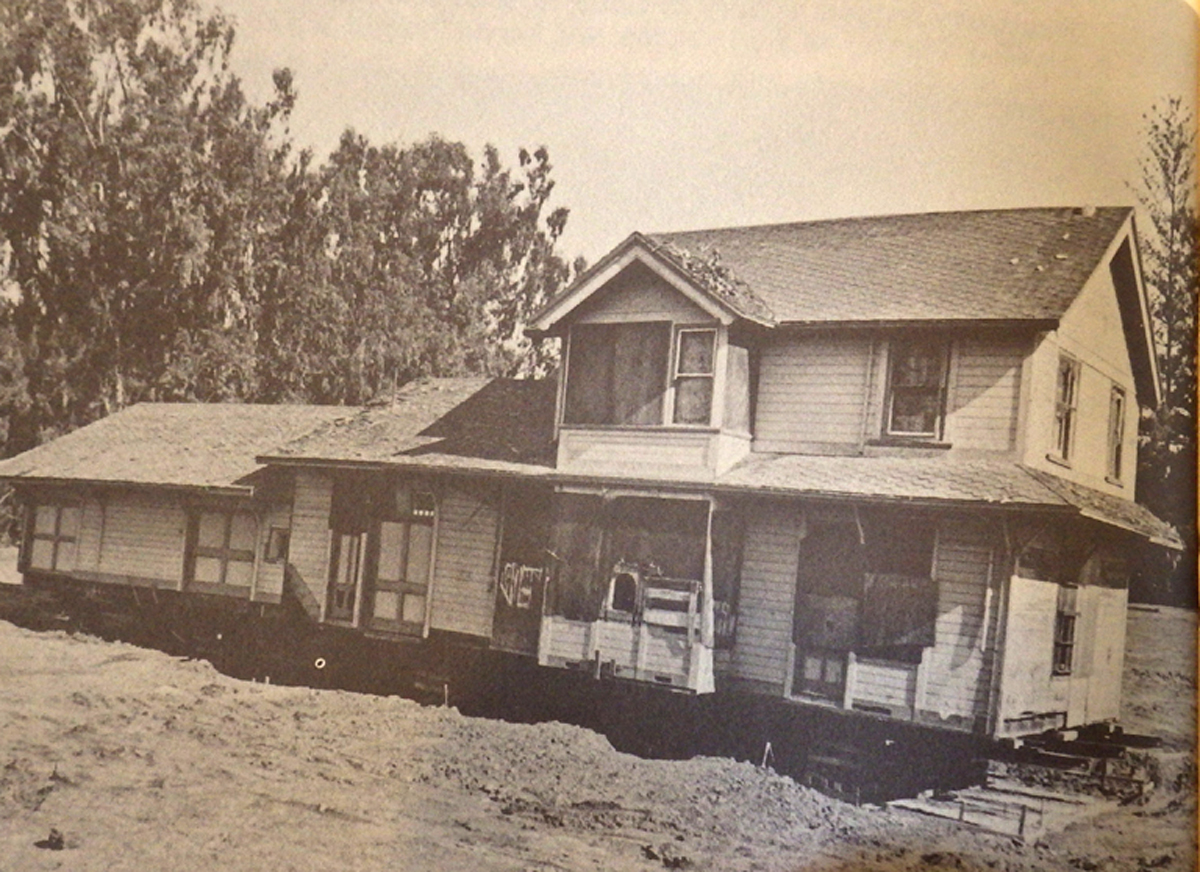
Both halves were delivered safely and set in place at 3 am. A crowd of 100 well wishers watched the start of the historic journey and, despite the cold and late hours, dozens were there until the very end. Many of them had walked the whole distance alongside the depot.

A monumental event in the history of Goleta was successfully achieved , against all odds, thanks to the love and passion for our local history. But the work was far from over….

Once again, the locals stepped up and pitched in to help with the countless hours of restoration and needed supplies, as this News Press article describes.
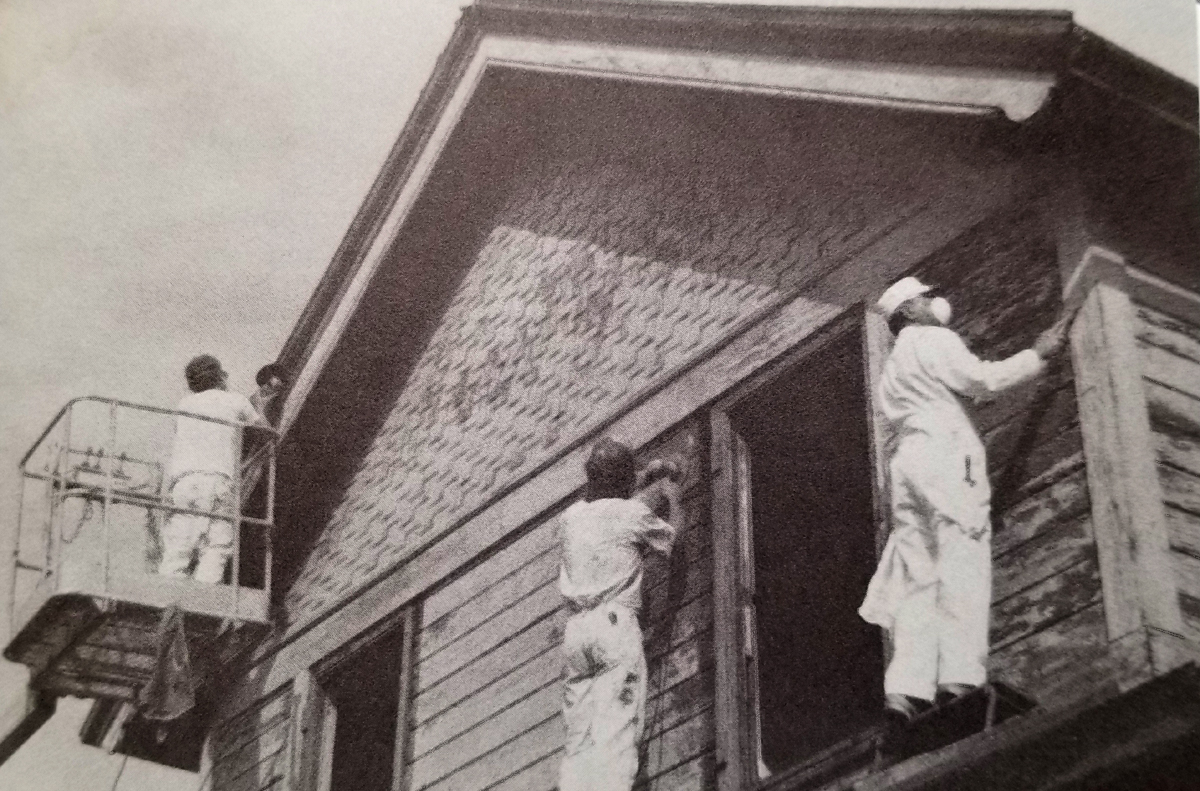
Another 11 months of exhaustive fund-raising and extensive restoration work followed before Goleta Depot would be ready to reopen.
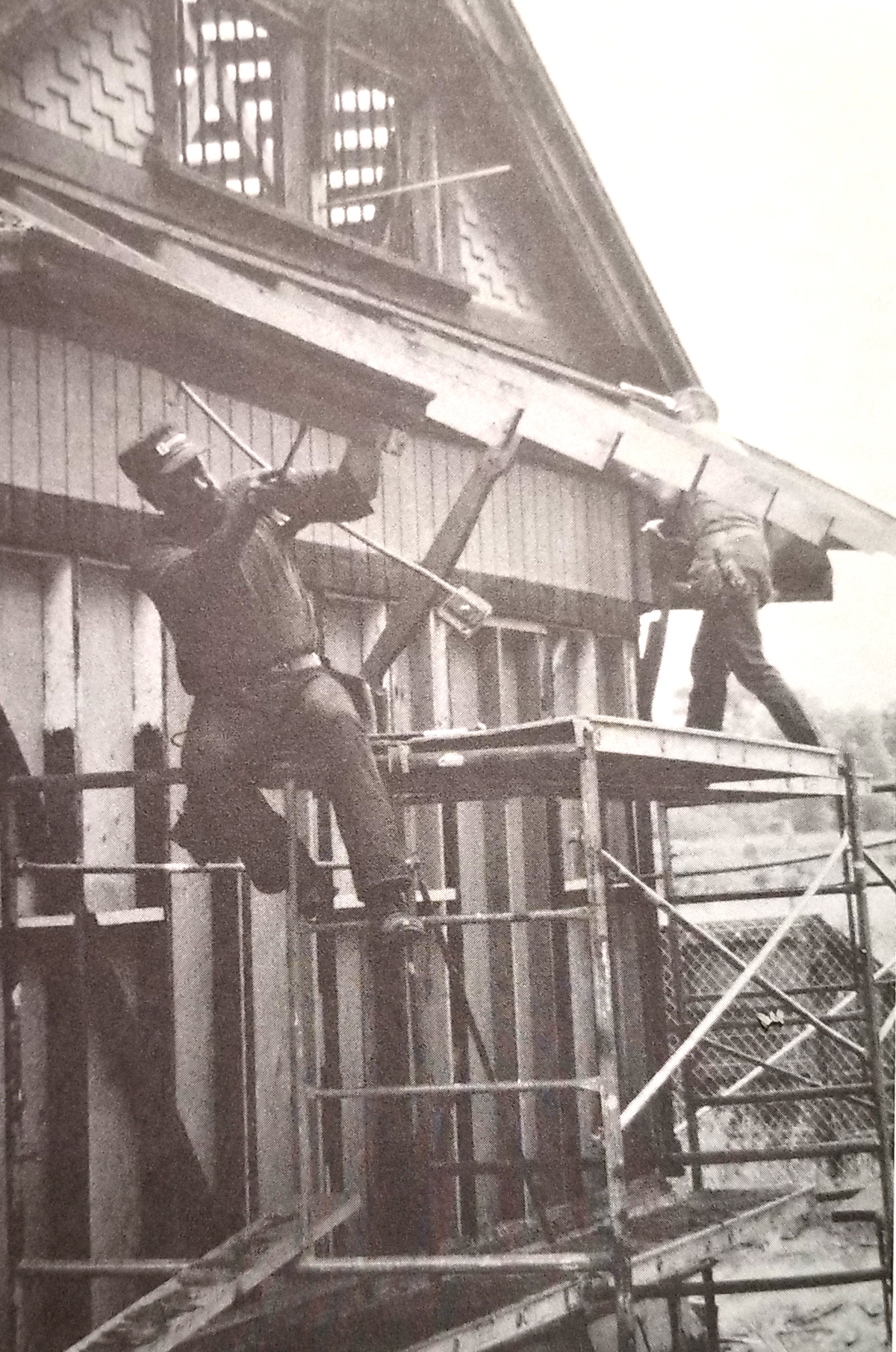
The fund raising events continued and laborers donated their time to finish the job. It was truly a community project with scores of volunteers from all walks of life, working together for the depot.

The cherished “GOLETA” signs that once hung on the depot had long since vanished, but with the enthusiasm of this project, they both were magically located and returned within weeks!
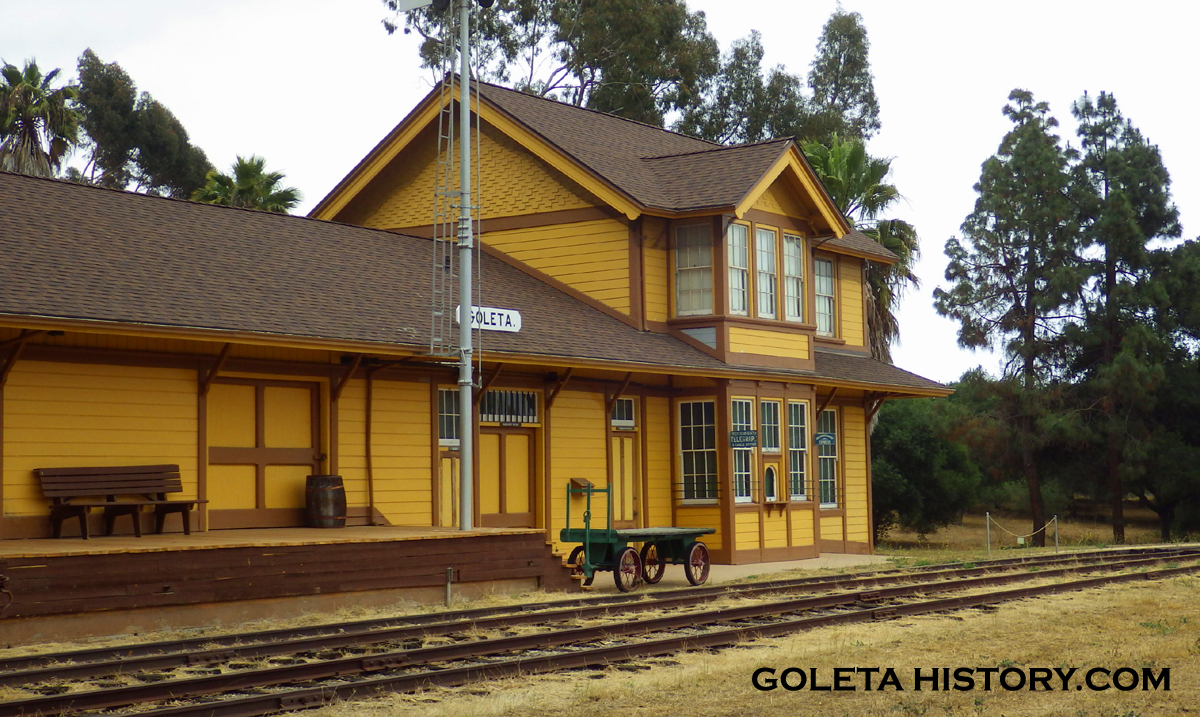
In order to help pay for building maintenance and other expenses, the building was originally rented to three nonprofit organizations that shared the historic space for a few years.
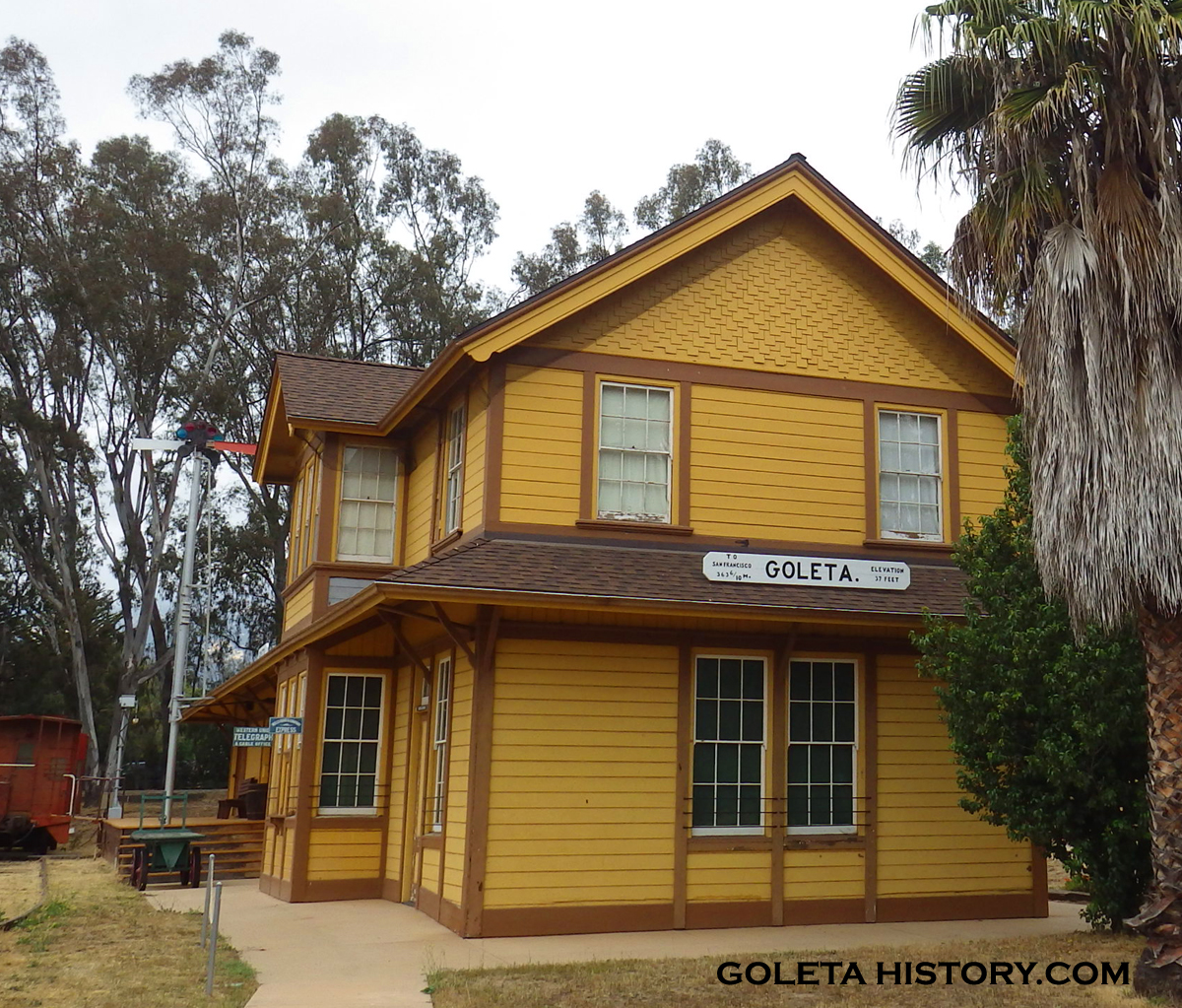
On October 10, 1982, the depot was designated a county historical landmark and the occasion was marked by a grand dedication ceremony.
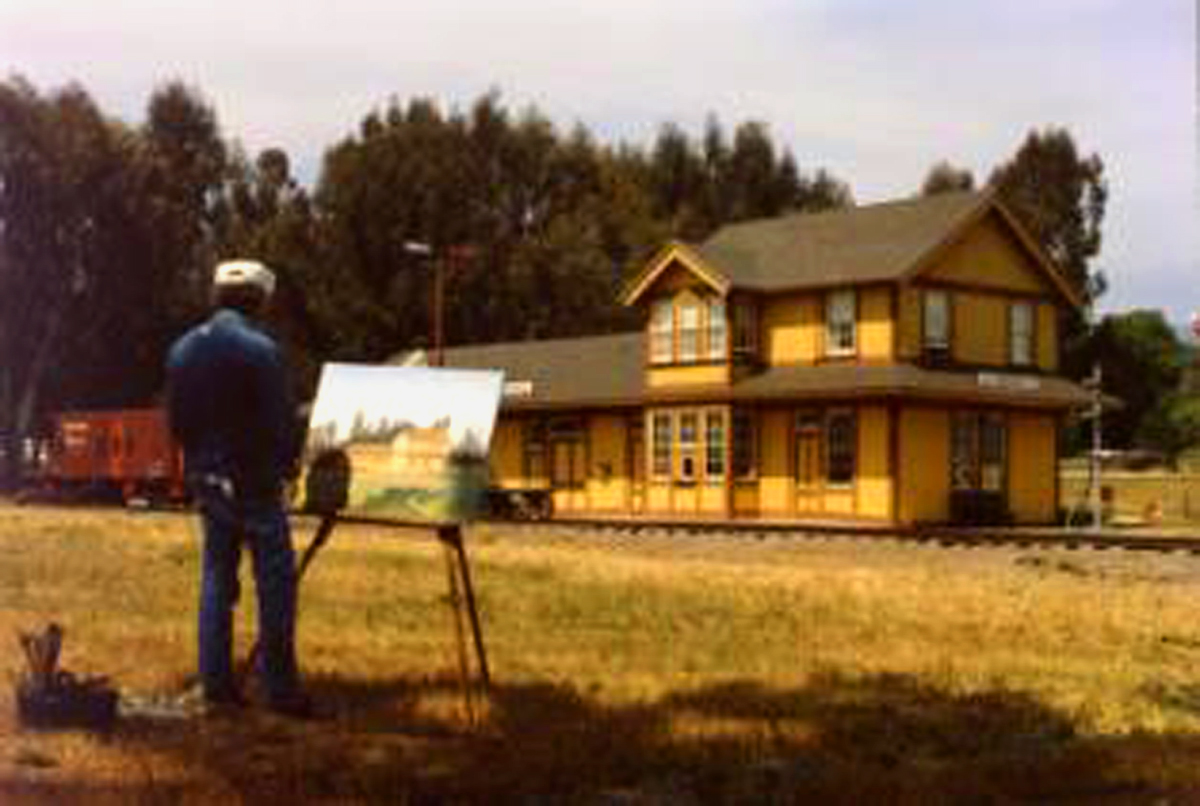
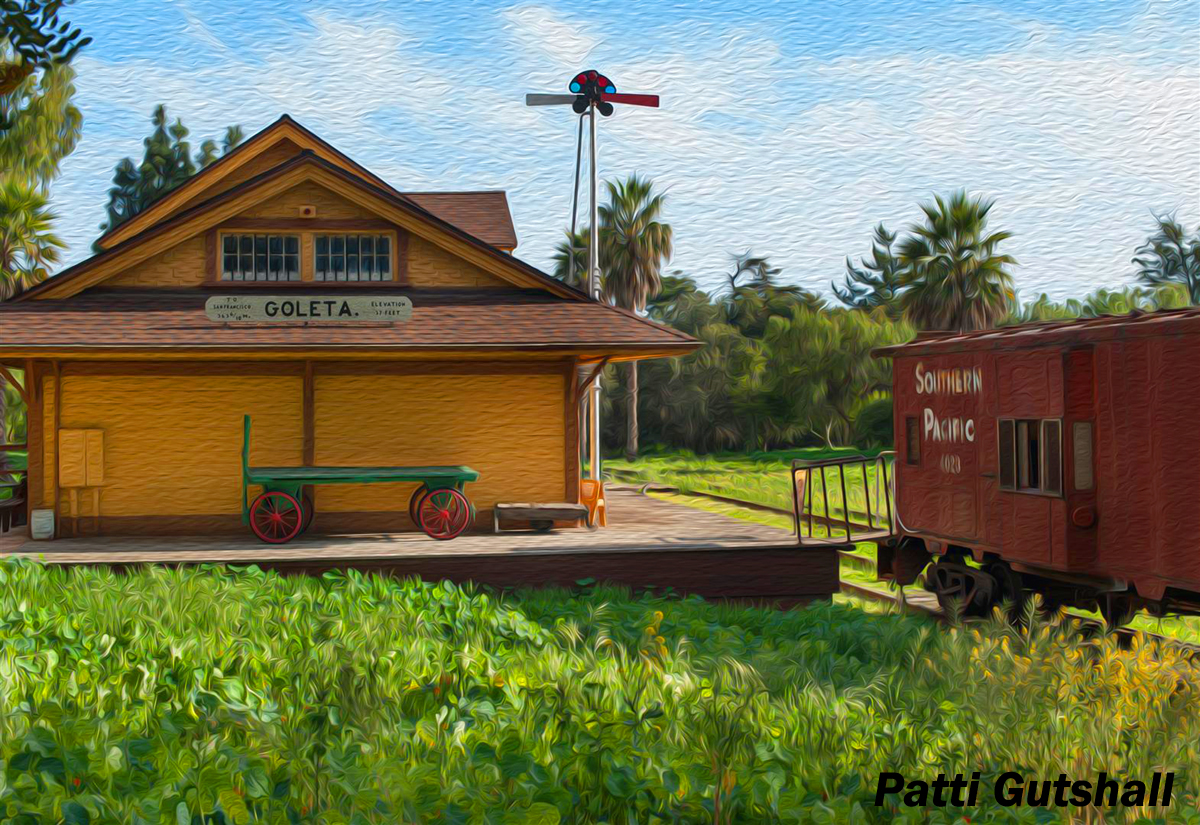
To this day it’s still a regular subject for artistic renderings and special events.

The Goleta Train Depot is now part of the South Coast Railroad Museum, that focuses on the history, technology, and adventure of railroading. But of course , the depot is the star of the show.

The museum is open every Friday, Saturday and Sunday from 1-4 PM. Support the Railroad Museum by visiting and making a donation or become a member!

And bring the kids for a miniature train ride! The depot is available to rent for group gatherings and they have lots of special events for all ages, learn more on their website at goletadepot.org
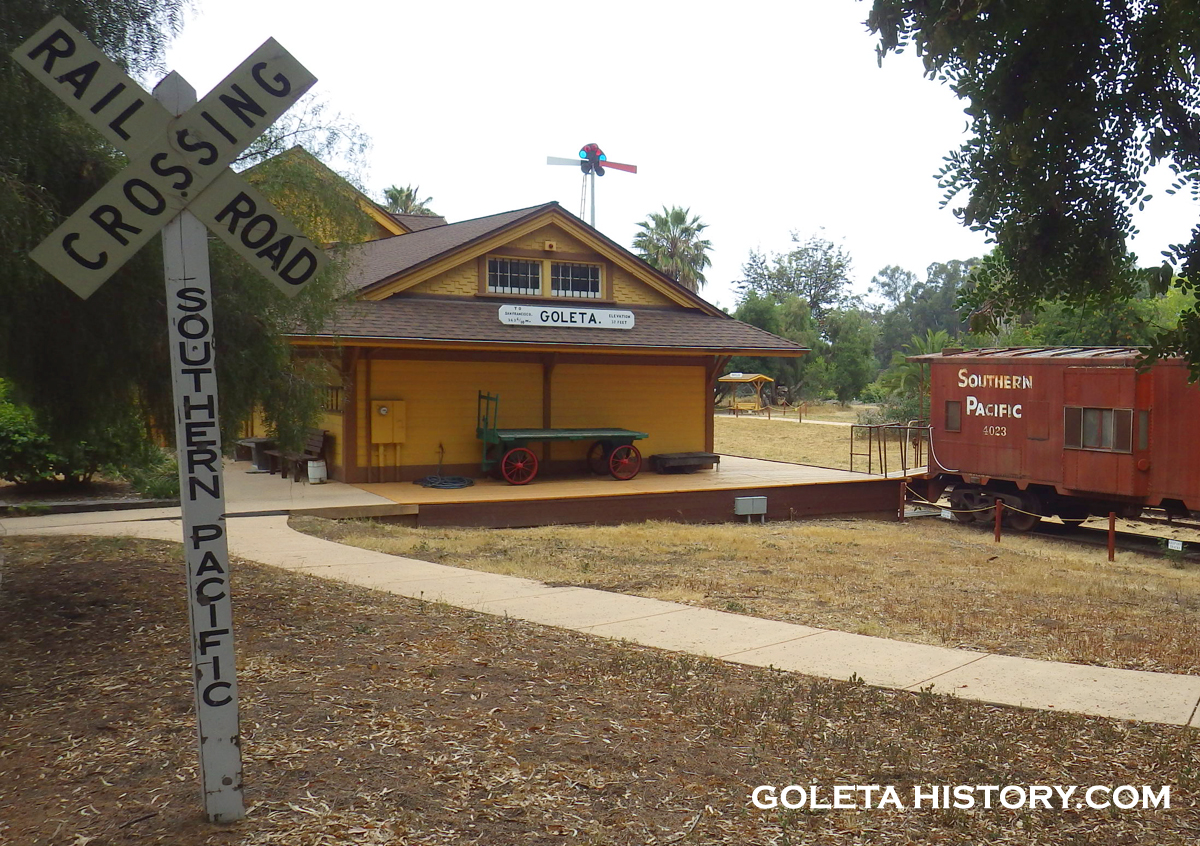
But most importantly, remember the power of volunteers moved by a common desire. That’s what made this place a reality. And maybe something like that could happen again in Goleta…….?
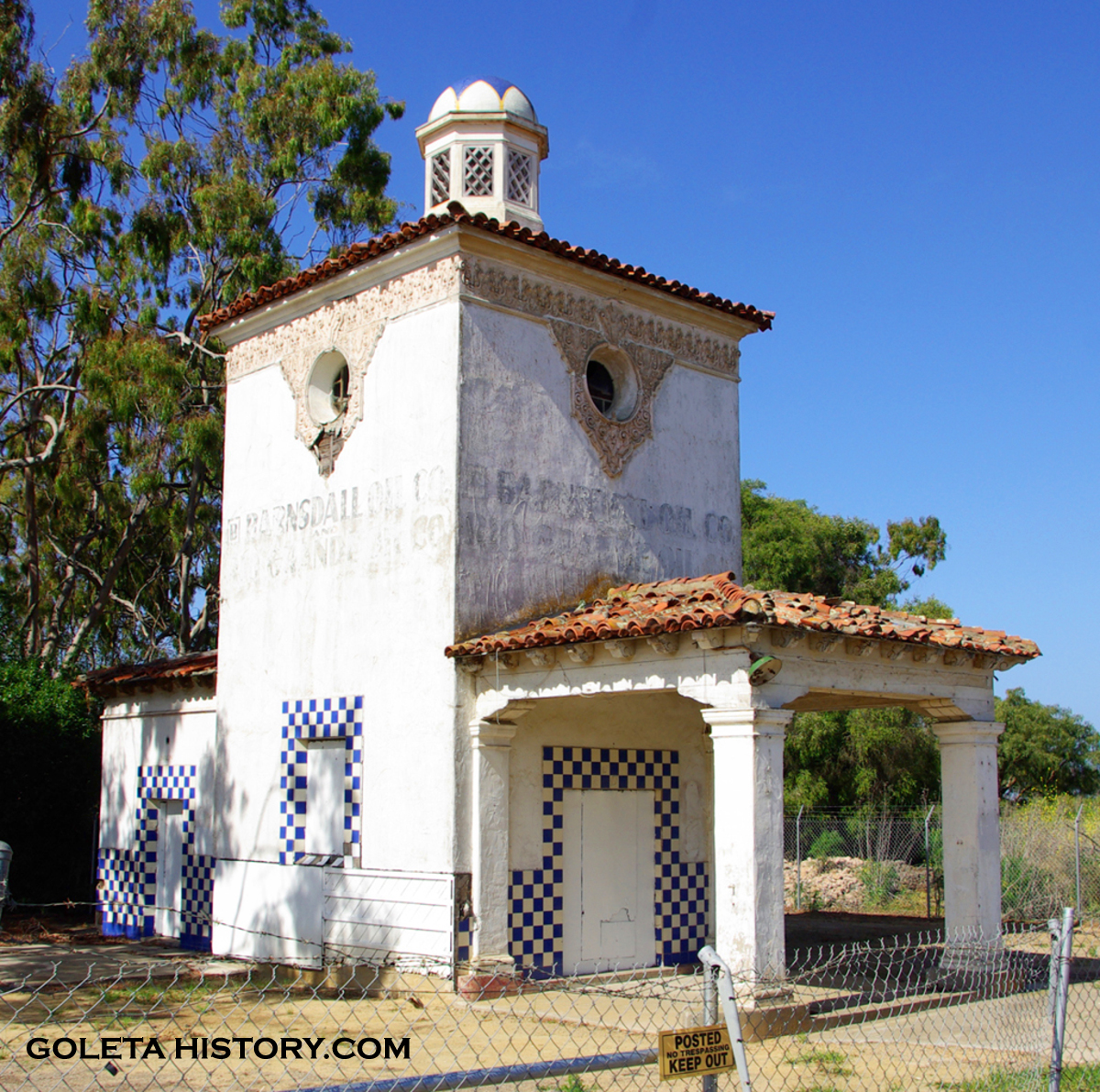
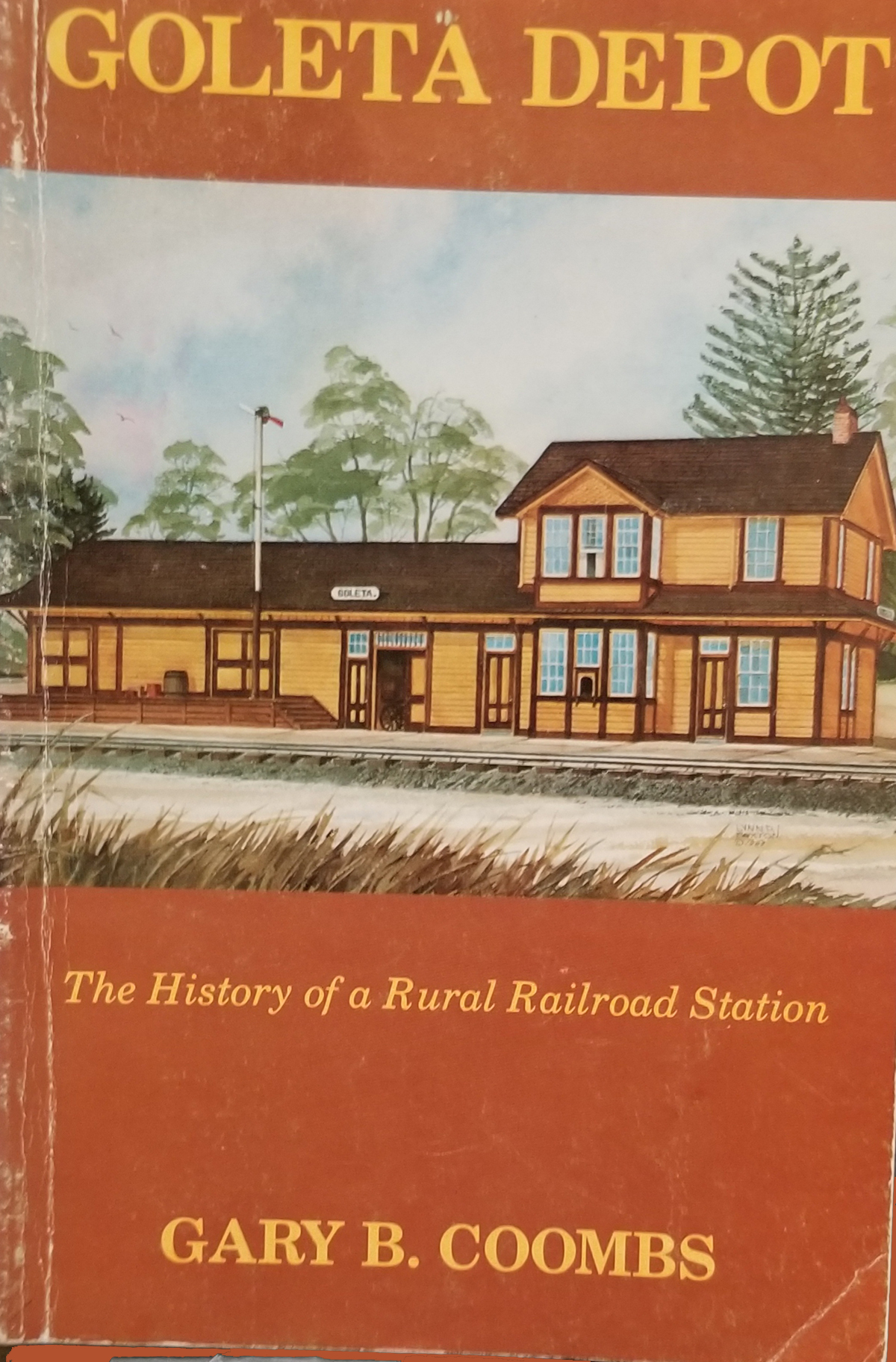
The main source for this page was a great book by the man that was instrumental in making it all happen, Gary B. Coombs. “Goleta Depot- the history of a railroad station”. It may be out of print but copies are still available on Amazon and EBay.
Find lots more great photos on the railroad museum Smugmug page here.
Sources: Gary B. Coombs, Goleta Valley Historical Society, Santa Barbara News Press, Train Talk TV, South Coast Railroad Museum, Walker A. Tompkins, Mark Gallardo
Categories: Goleta History
Love this stuff. Keep it coming!
thanks Scott!
Nice, well written, interesting, historical information and pictures saved forever.
I love all the stories you come up with! Being a Goleta local, growing up on our beautiful coast, makes the information fascinating! I’ve know these areas since the 1970’s.
All you publish is amazing from history to surf shots with local names to our foothills! Your work is noticed!
Keep up the great work..please..thank you
Thank you for the kind words! I love doing all of it.)
Very interesting article. Also the pictures are inspiring!
Love the story and the photos as we moved North to Eugene Oregon in 1979 and missed the relocation of the depot. I have many photos of the Goleta Depot in it’s original location taken during the late 1960s and 1970s and my wife and I lived on Mandarin Ave. in 1967 only a few of blocks from the depot.
Wow! This was so interesting. Really cool to read after just being there yesterday. I loved the photos of the depot being moved. Thanks for sharing all your good Goleta knowledge.
I’m from England, and I loved my visit to the station last year.
I enjoyed riding on the train with my son who has emigrated to Goleta from London, and my grandson.
I had such an interesting chat with the engineer of the loco. In fact we went round twice .
The efforts of moving the Depot were certainly well worth it and I look forward to my next visit when I can get over to California .
I used to work at Newton Construction supply adjacent to the abandoned train station back in the 70’s. Good times.
My friend’s dad, who is now in his 80’s, told me growing up, he was friends with the station master’s son. He would often spend the night in that train station as that is where the family lived. It is bit of a trip to visit the old railroad station and imagine kids playing there (albeit on Depot Road back then) and think one of those kids is still alive. What a different time.